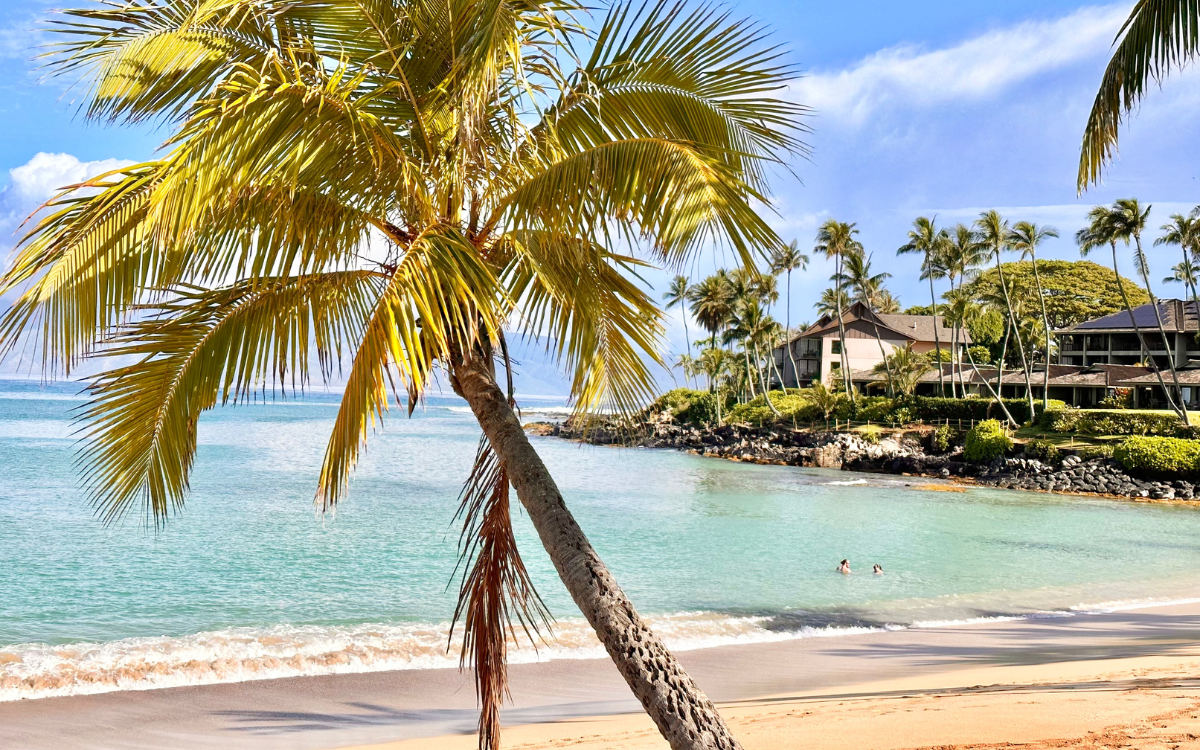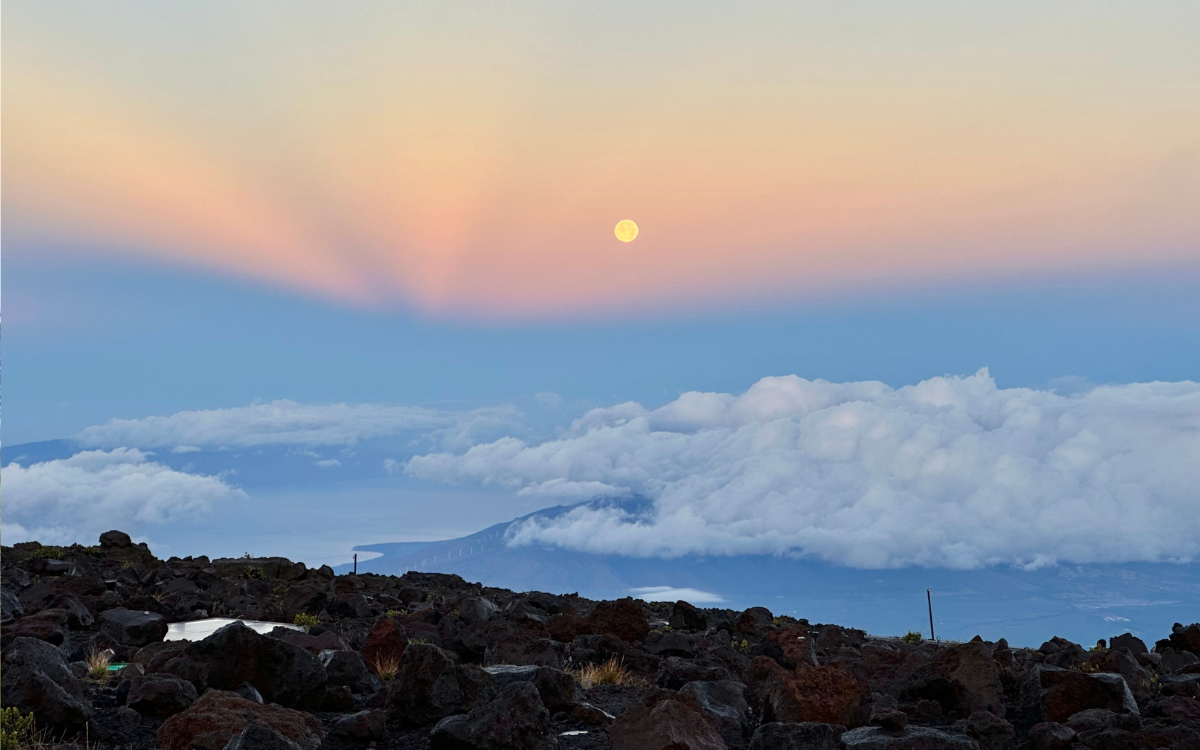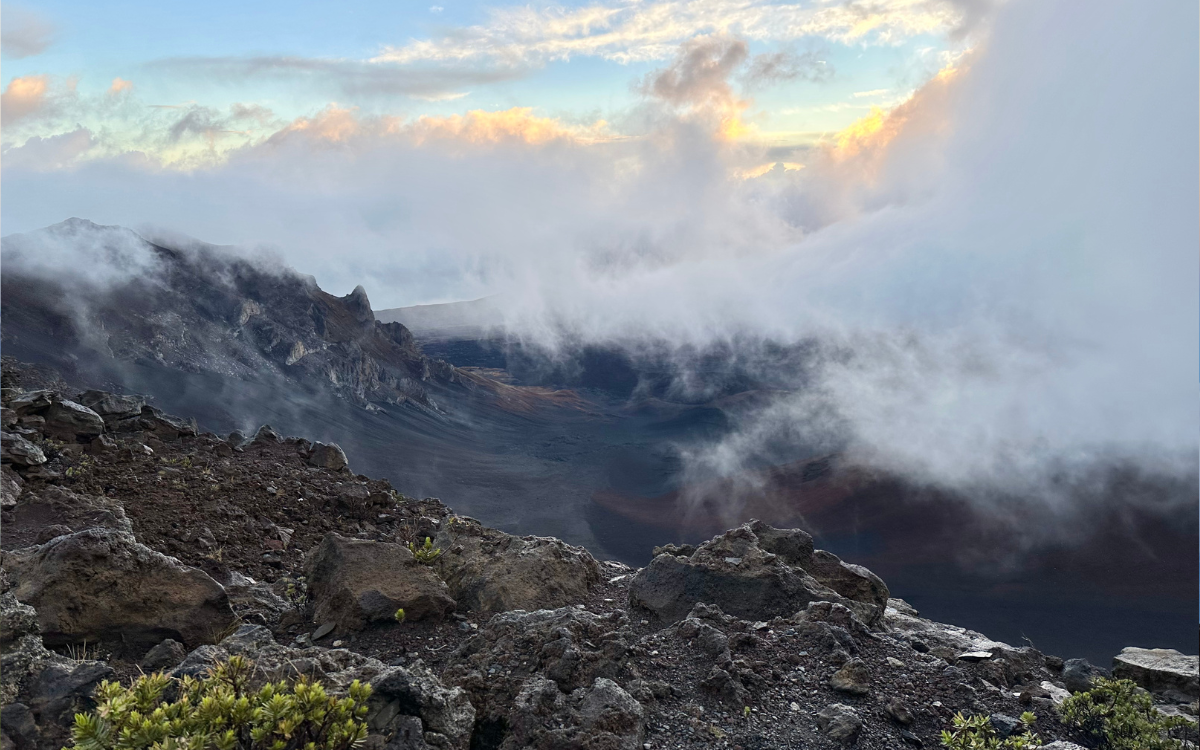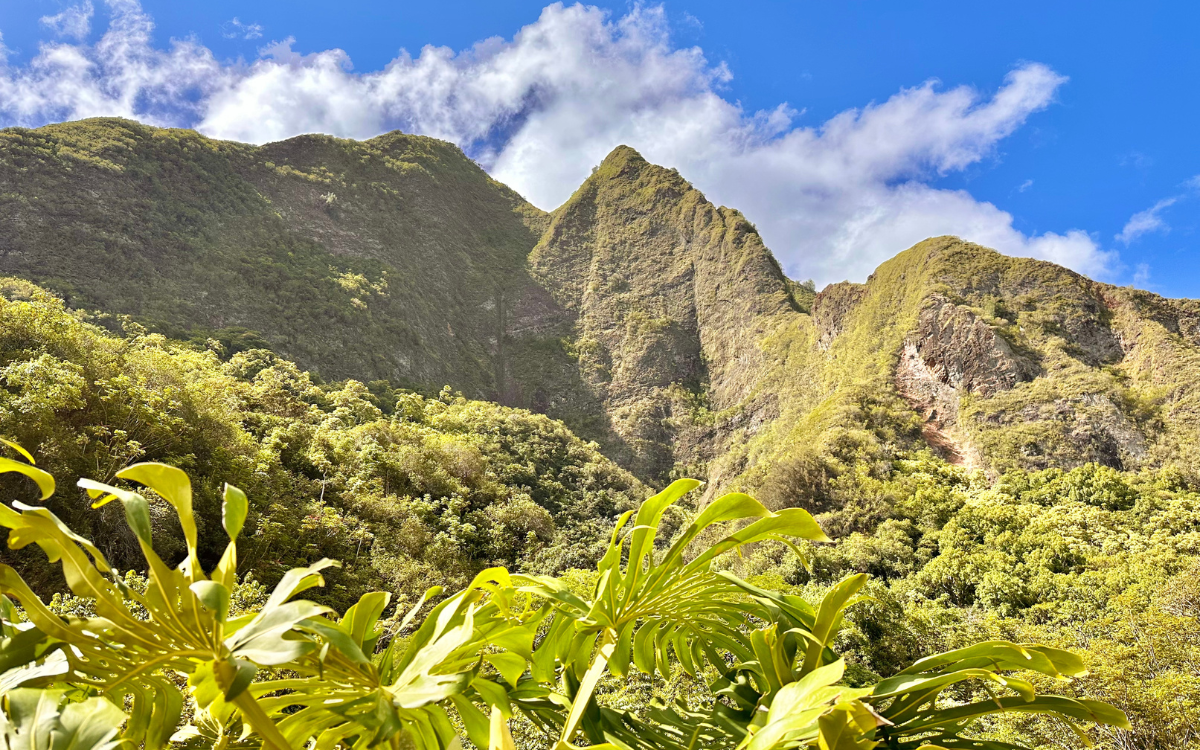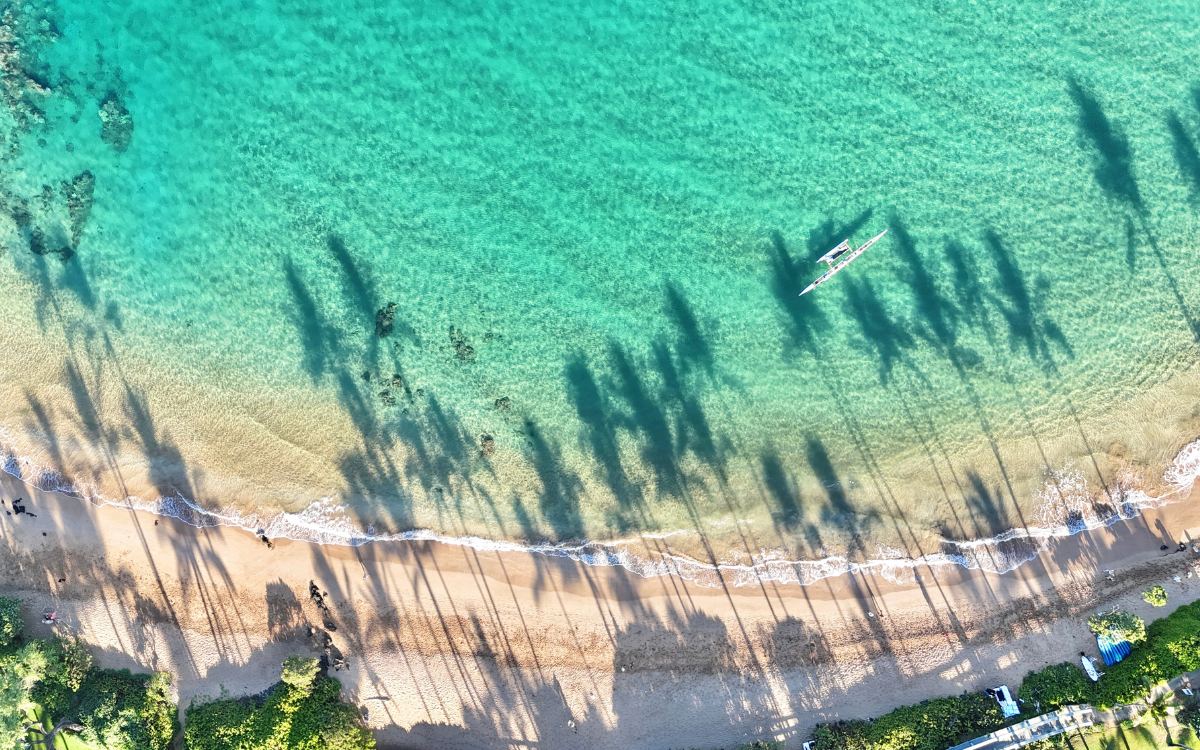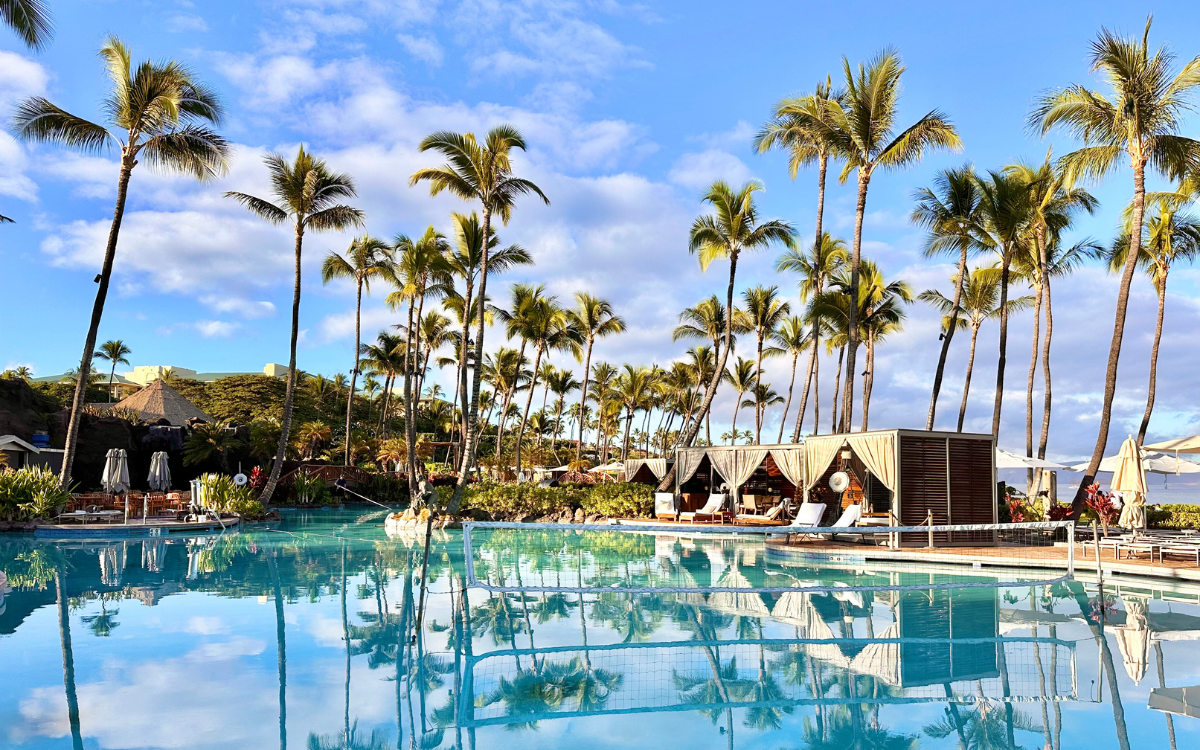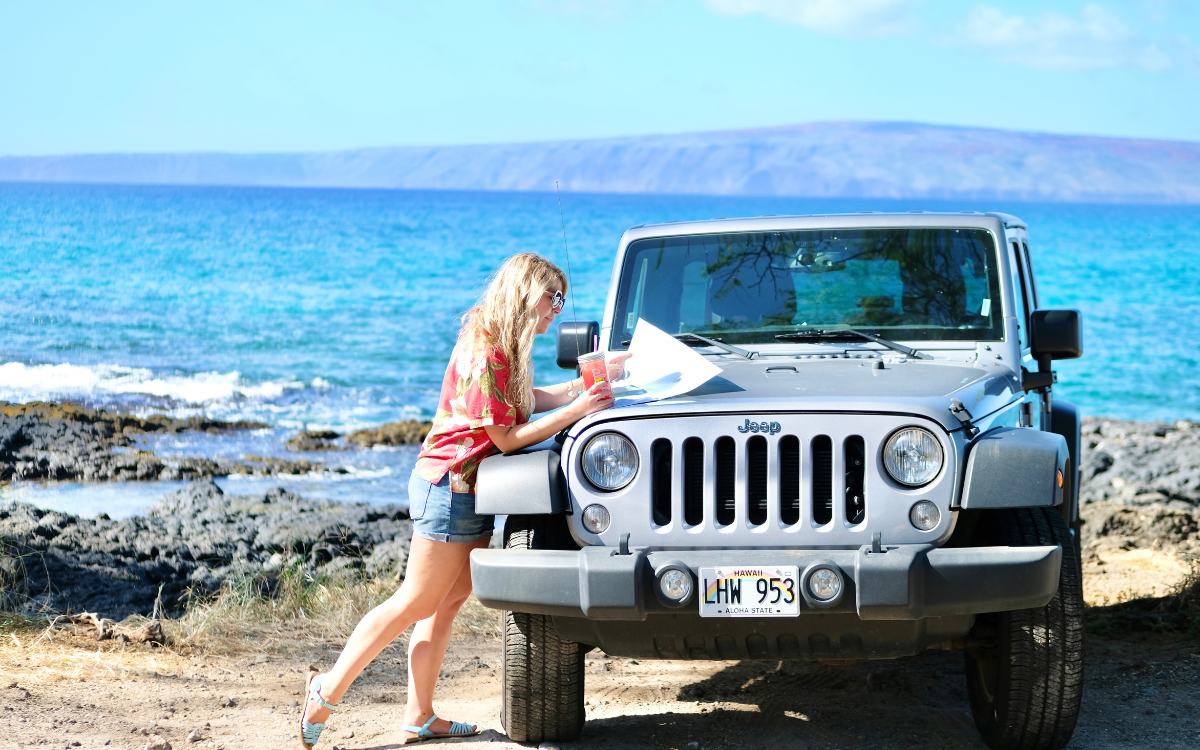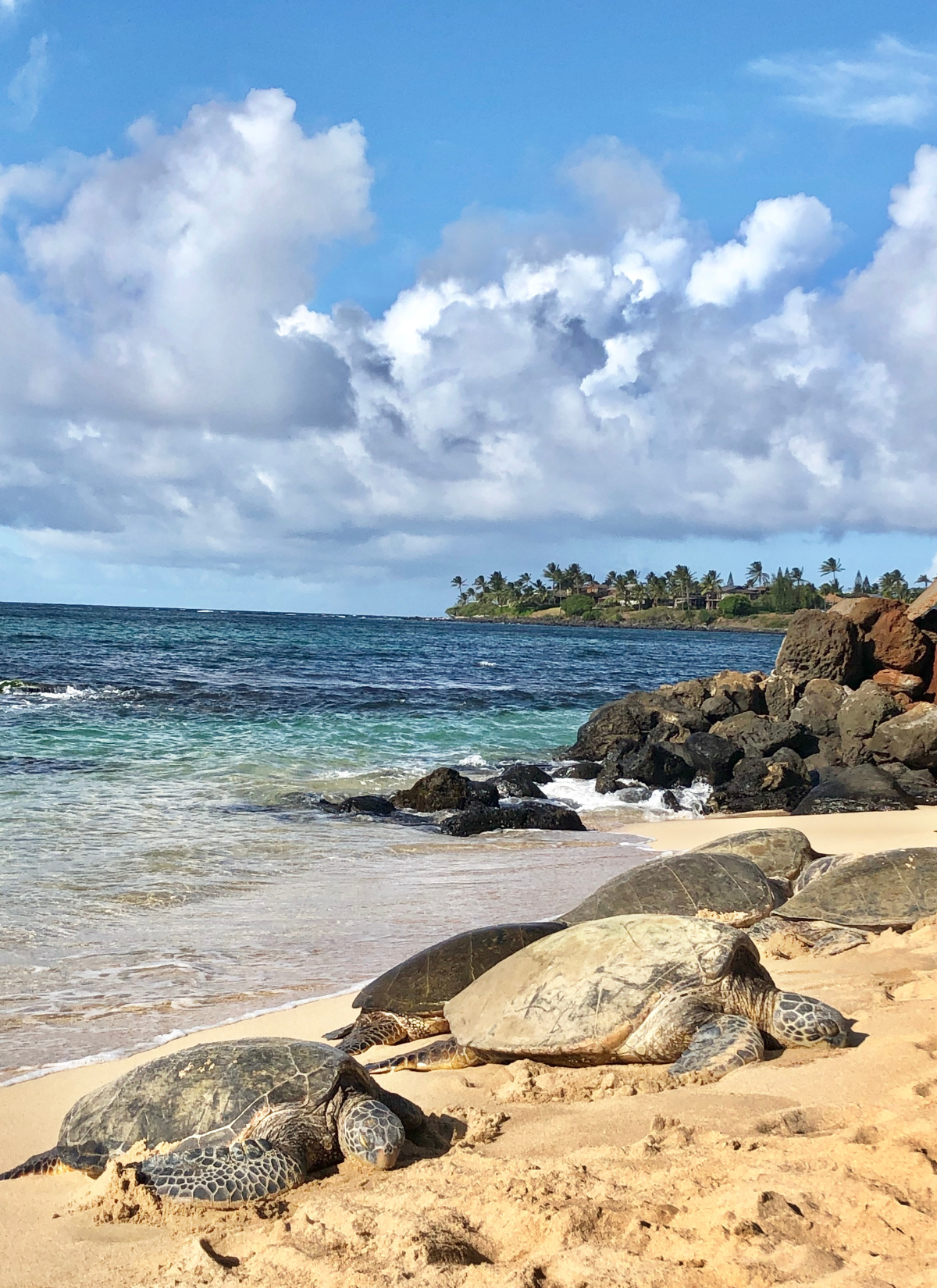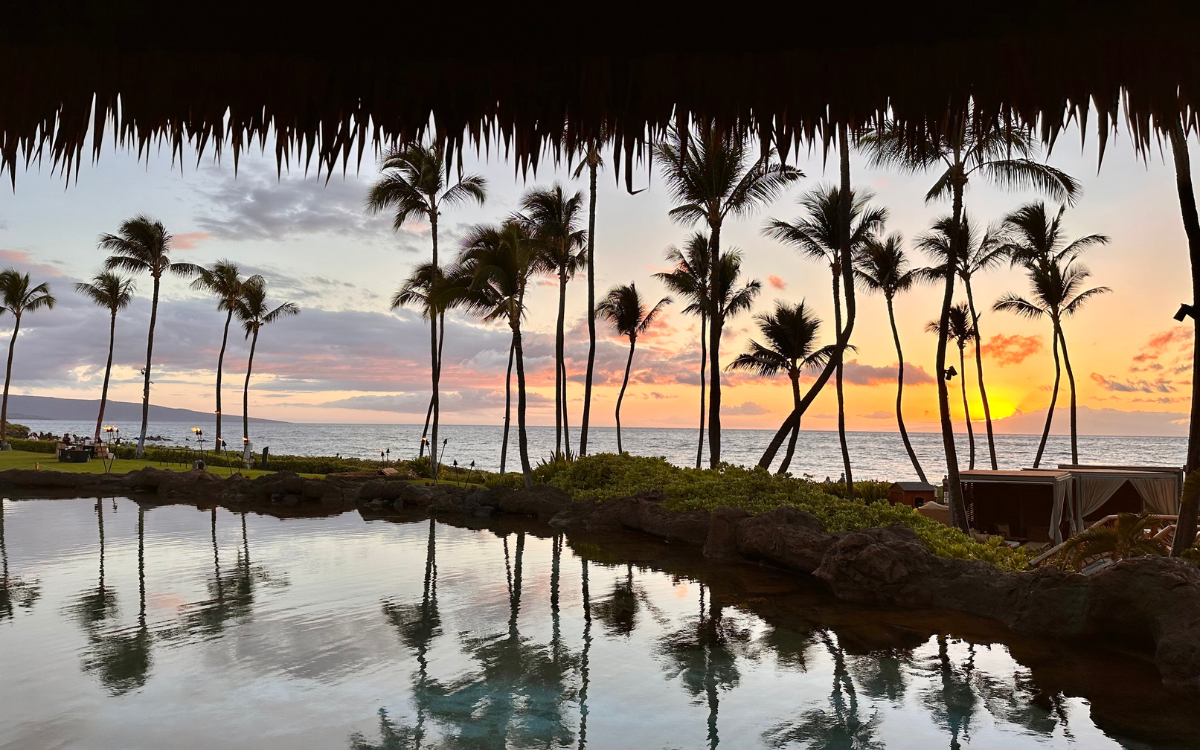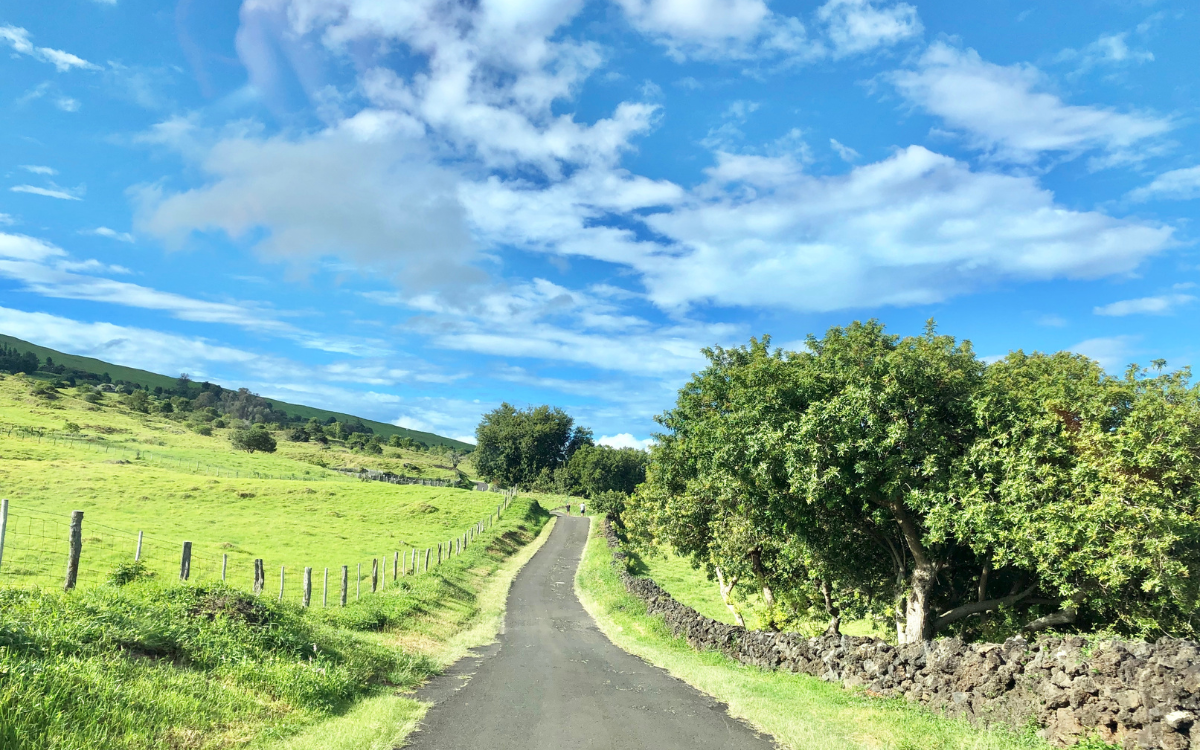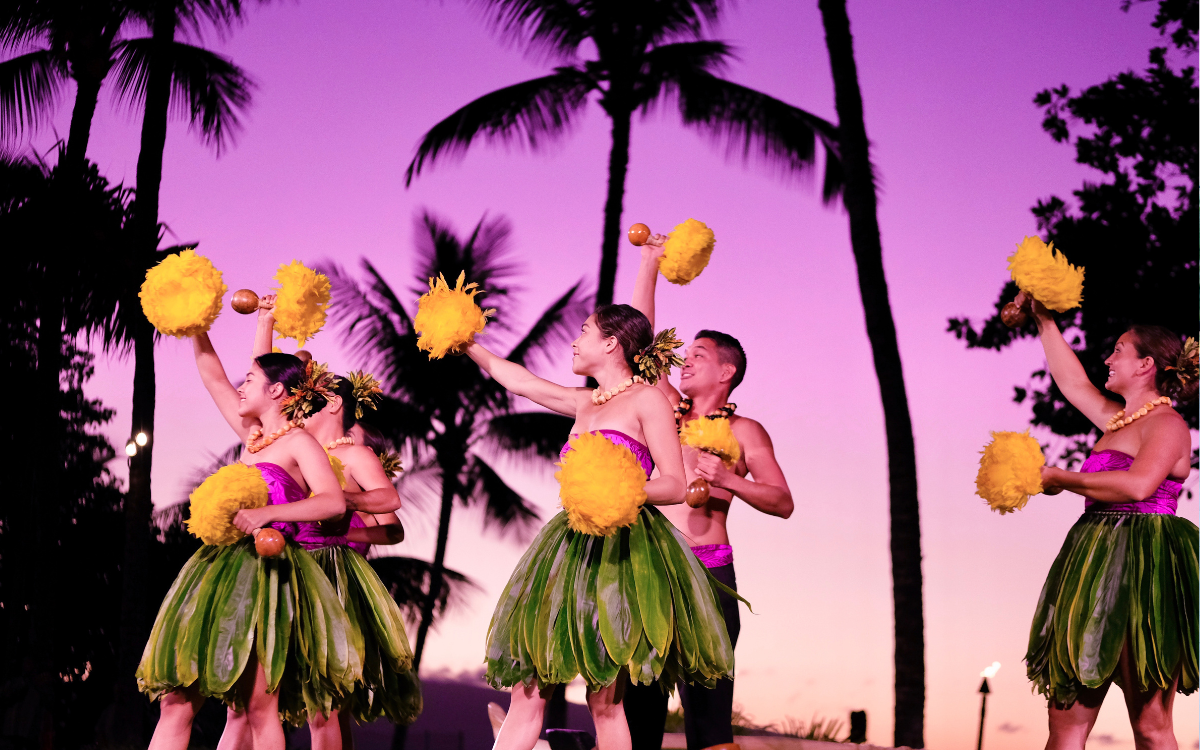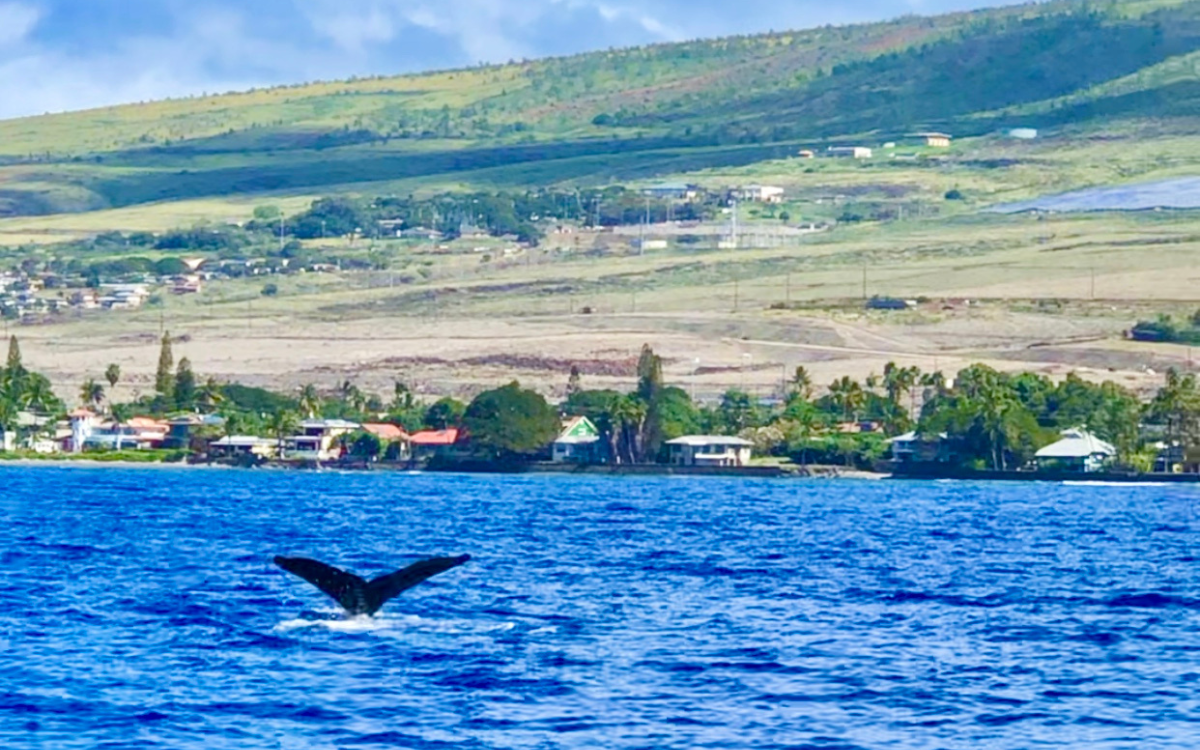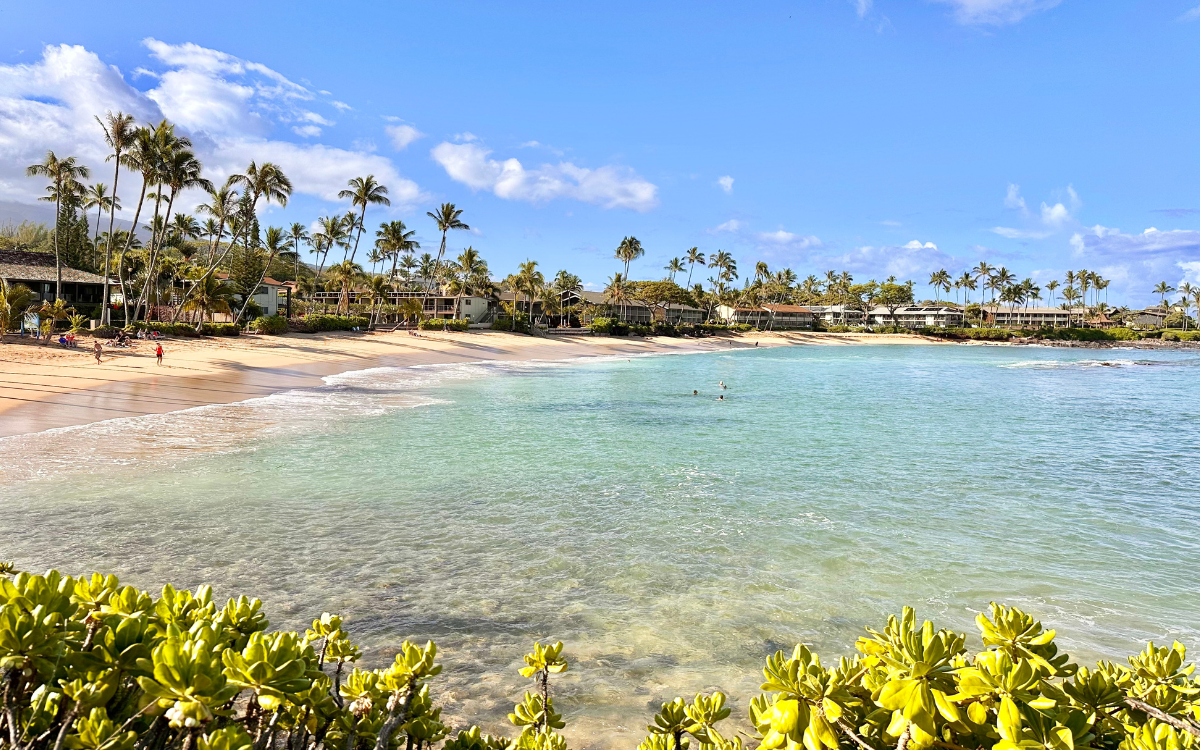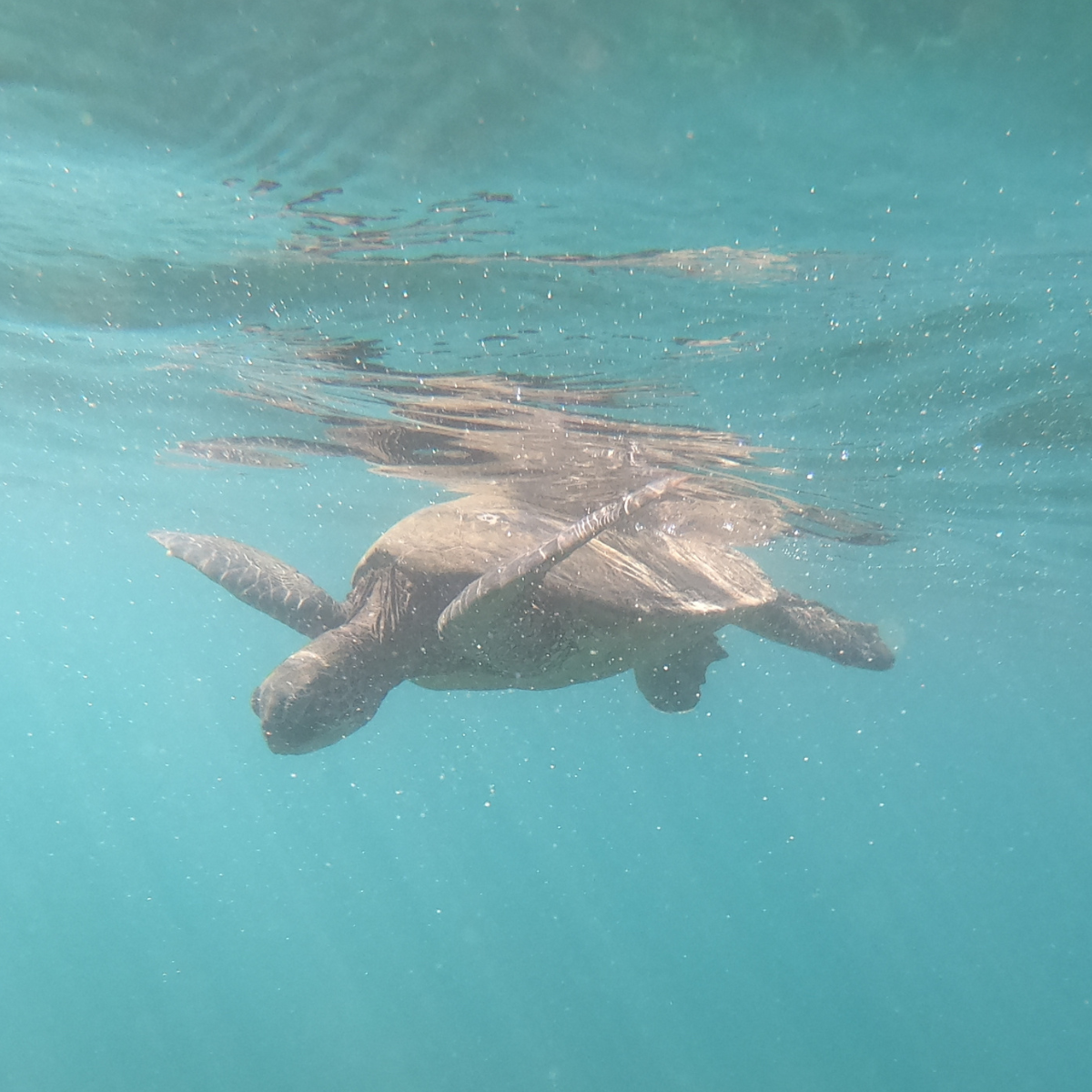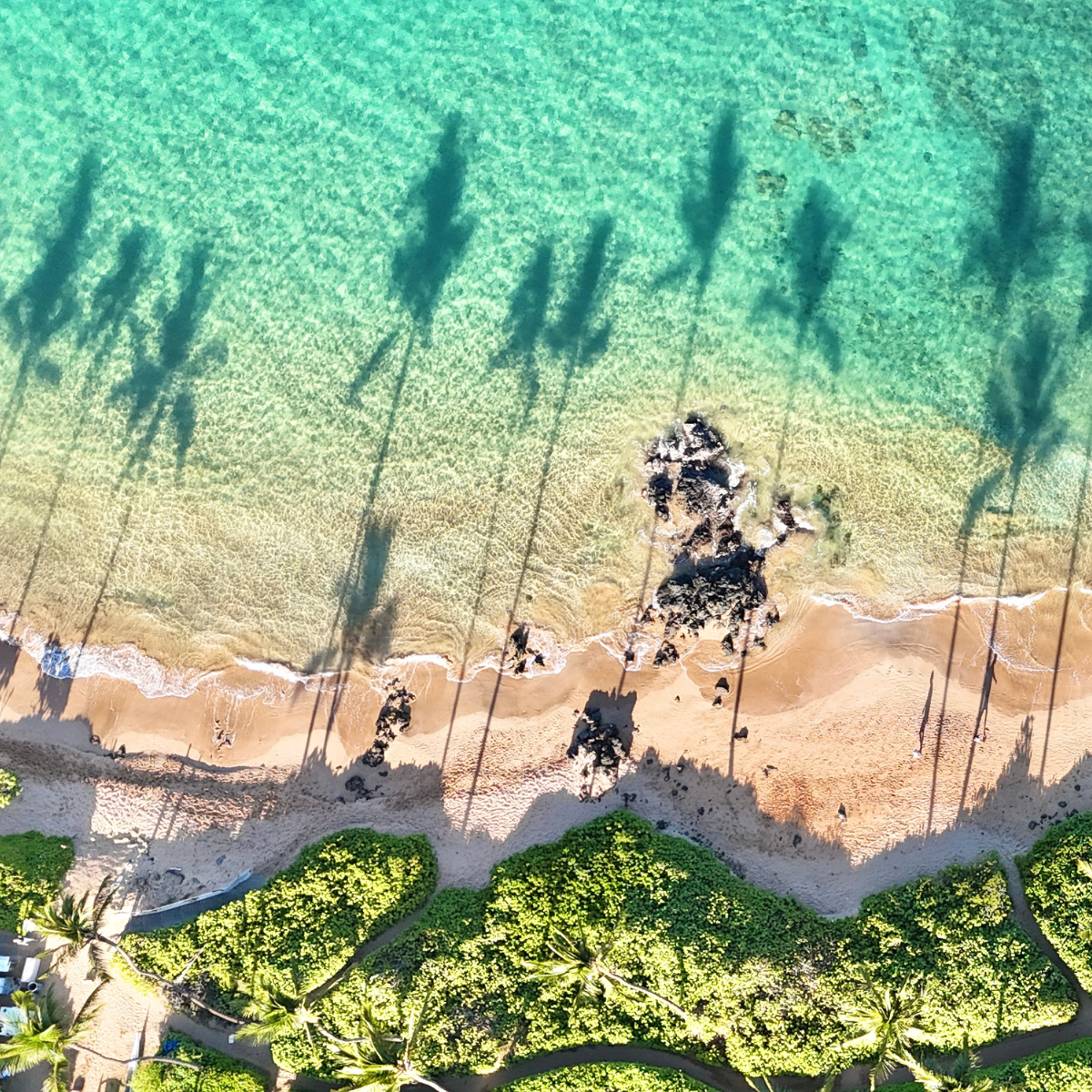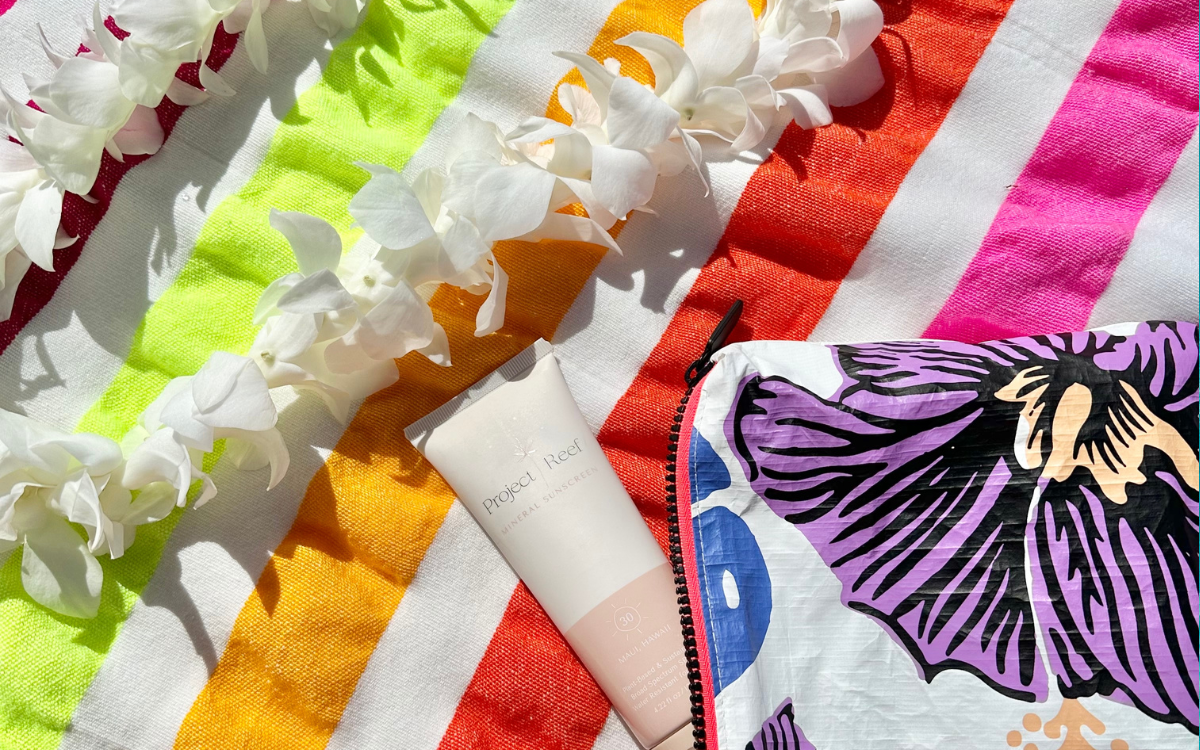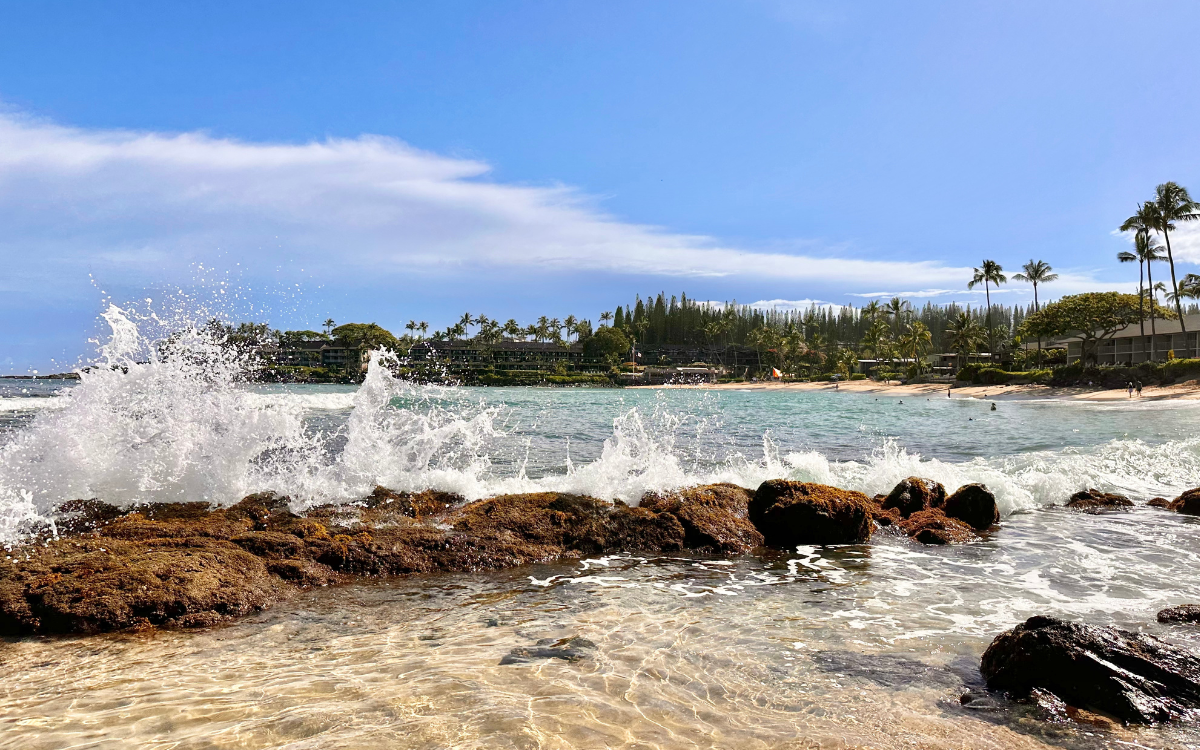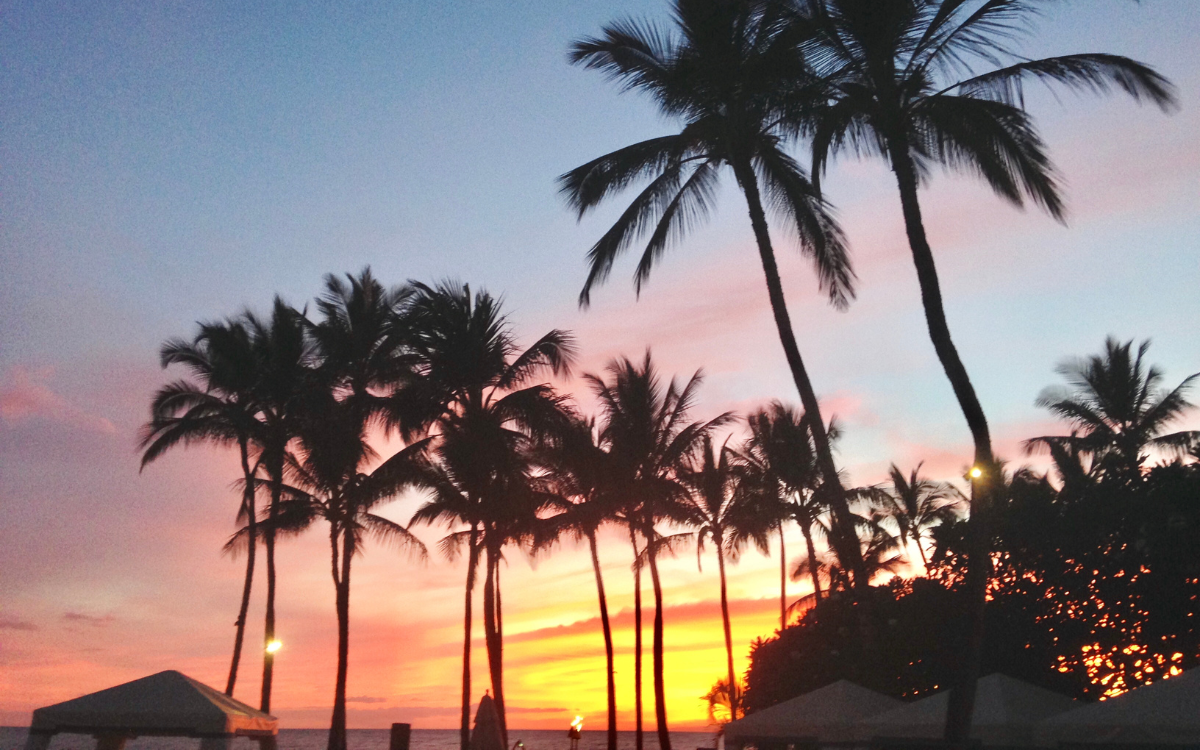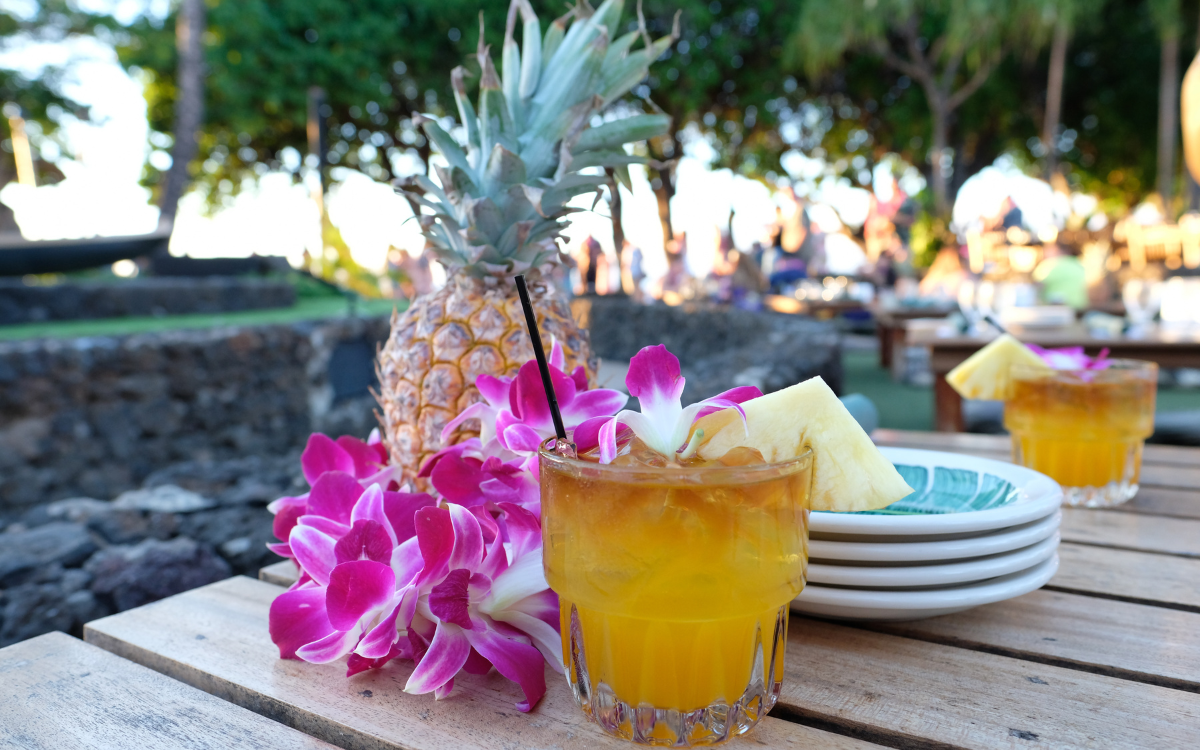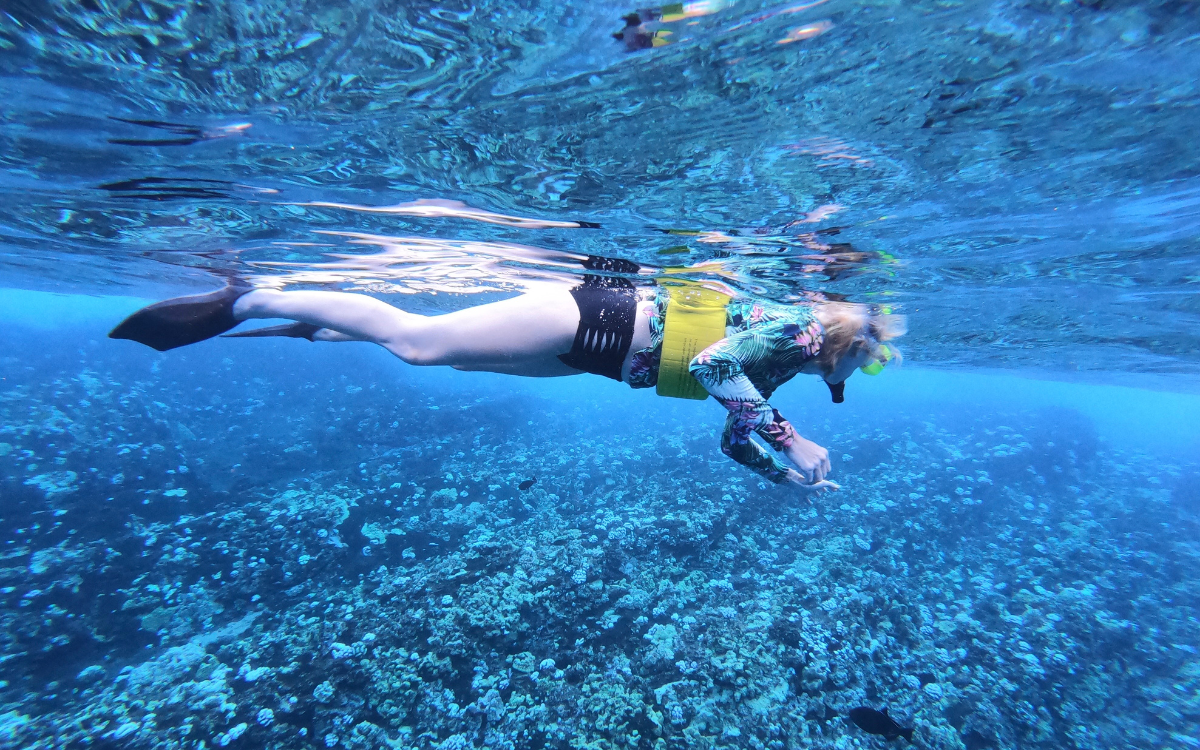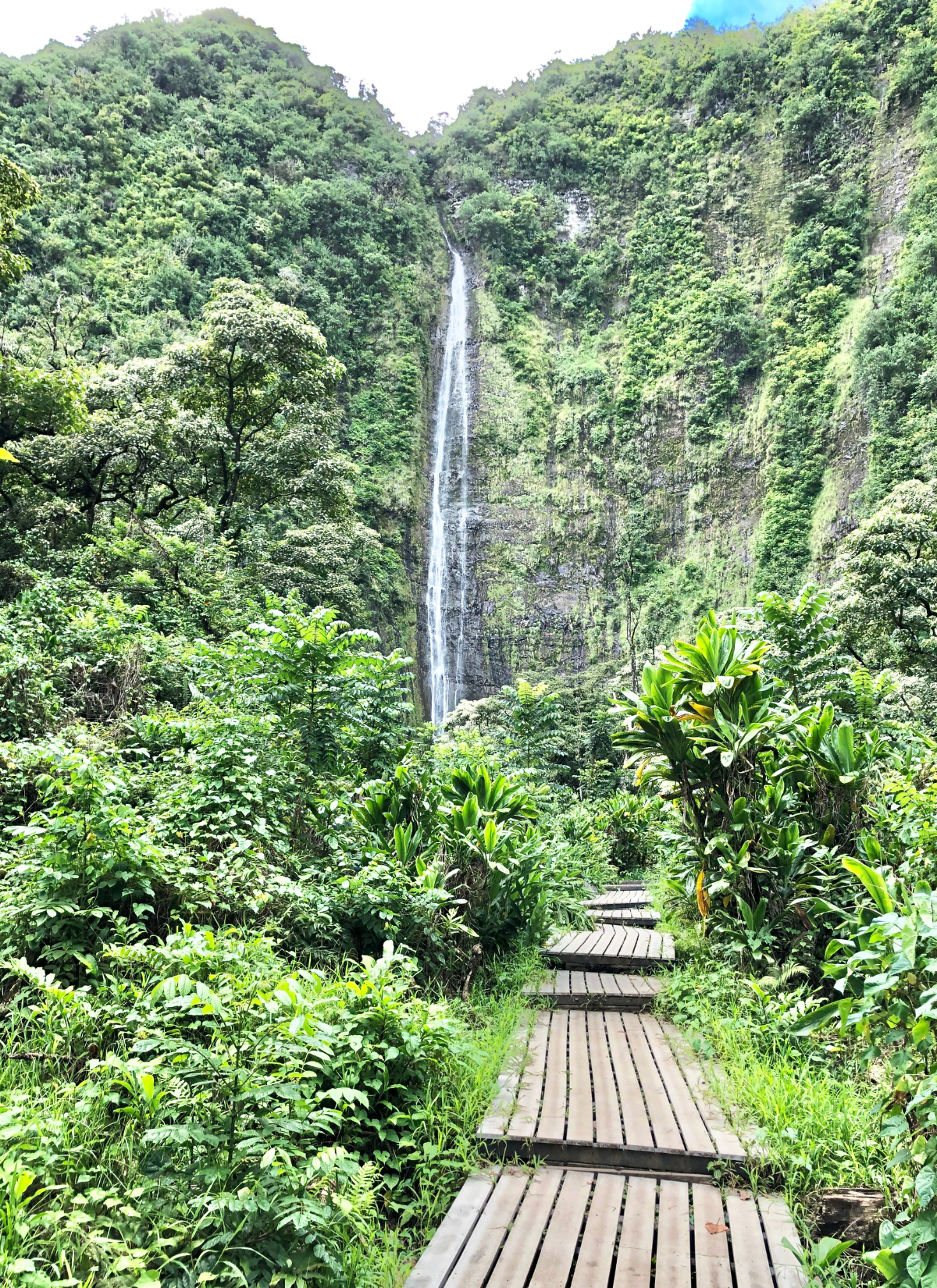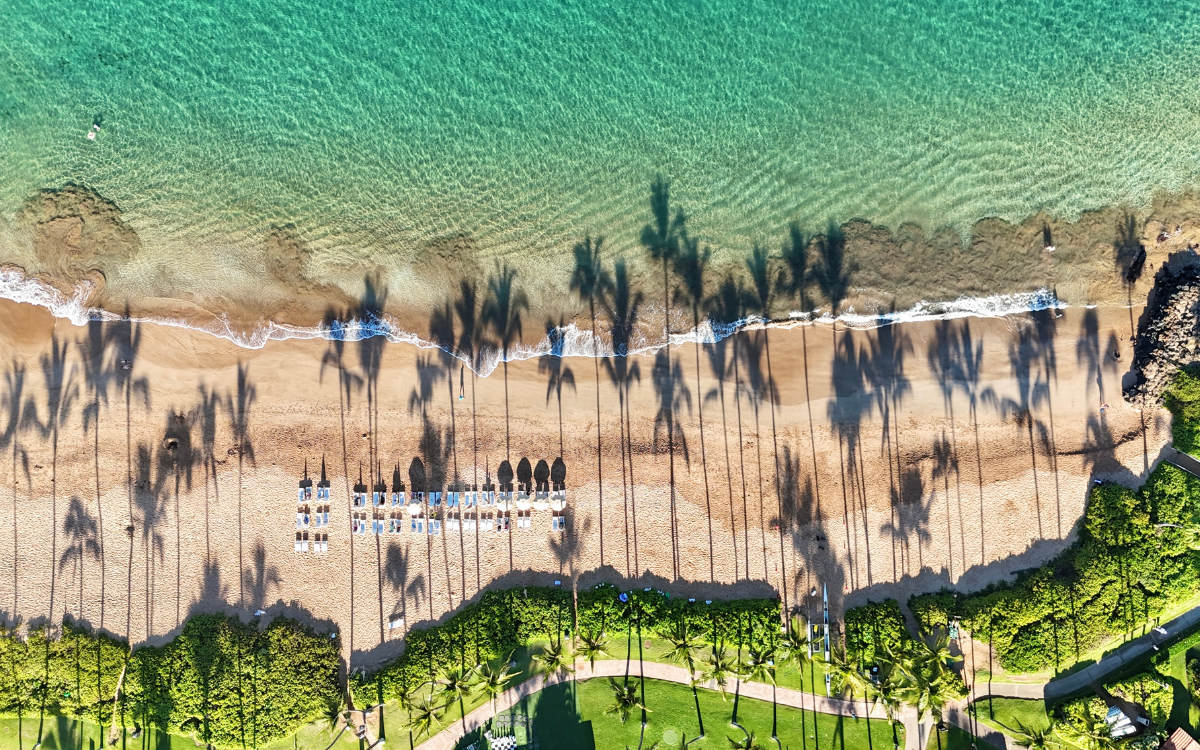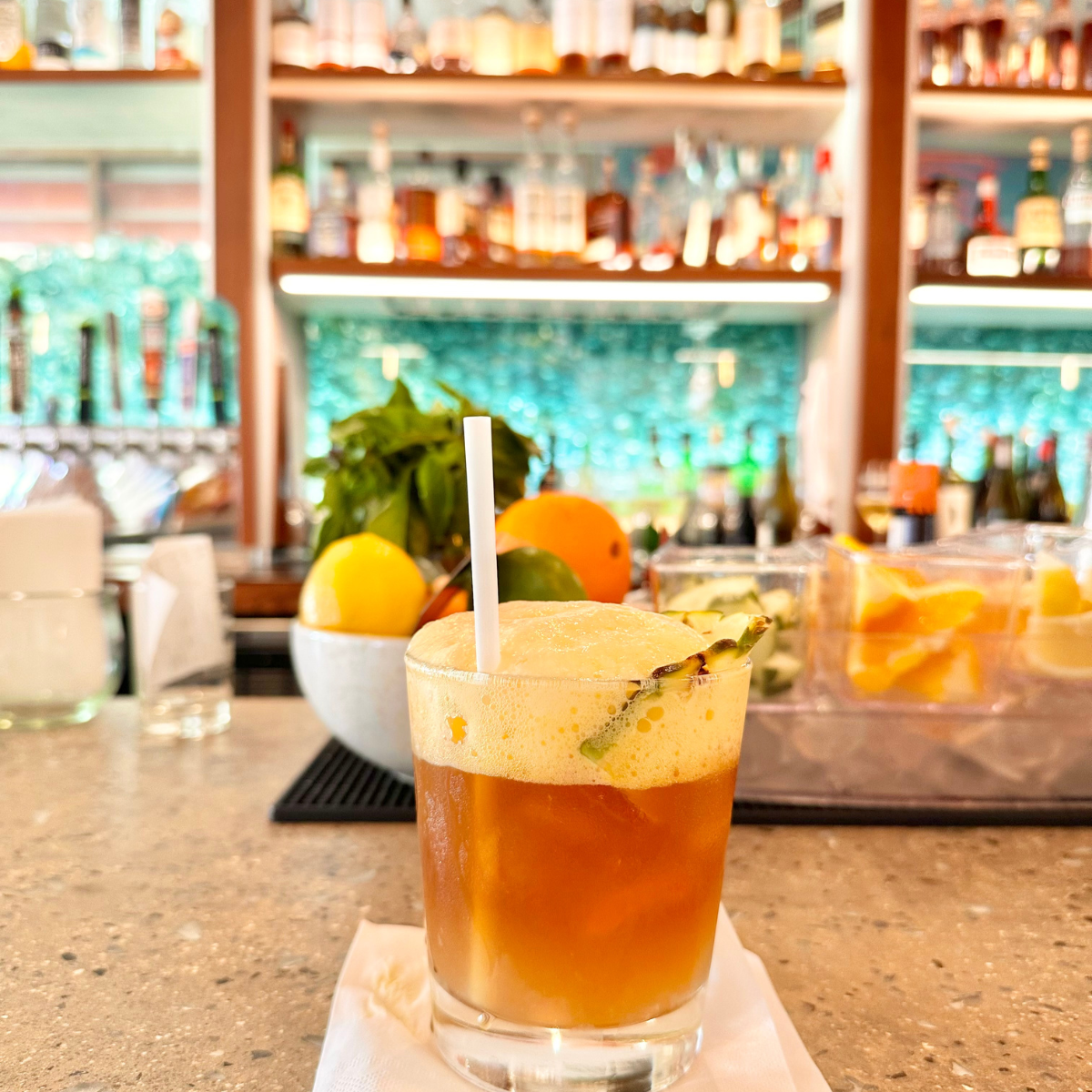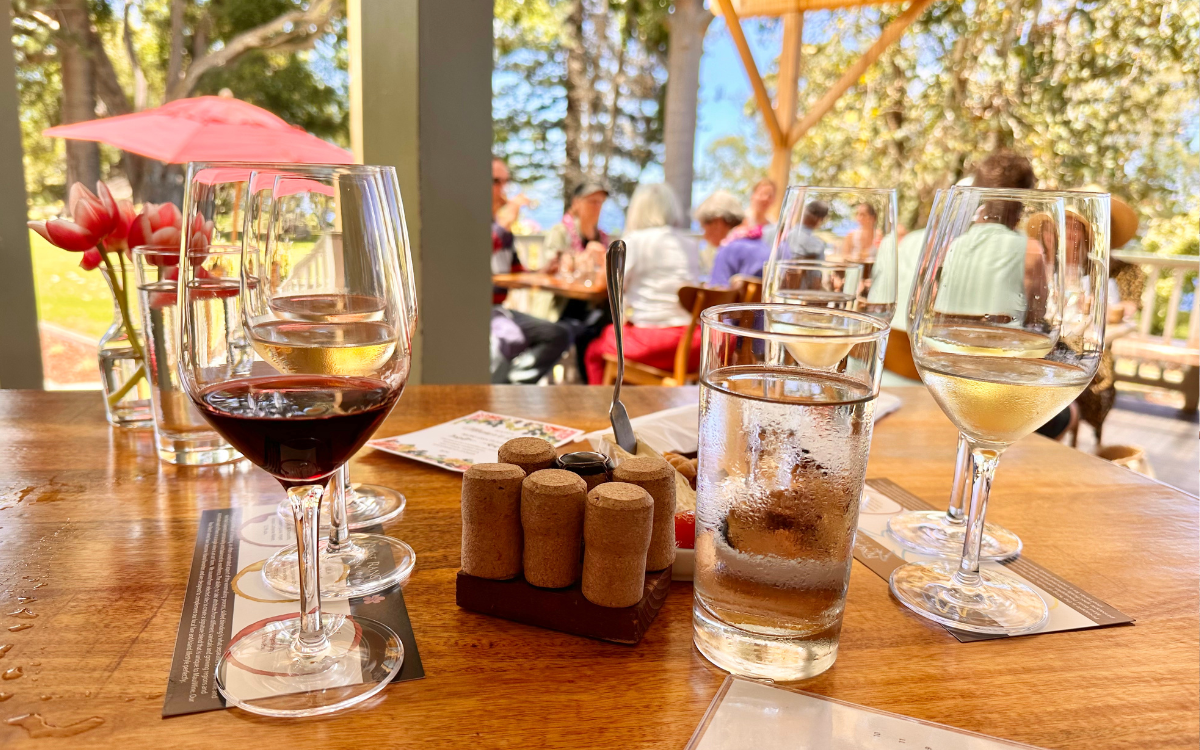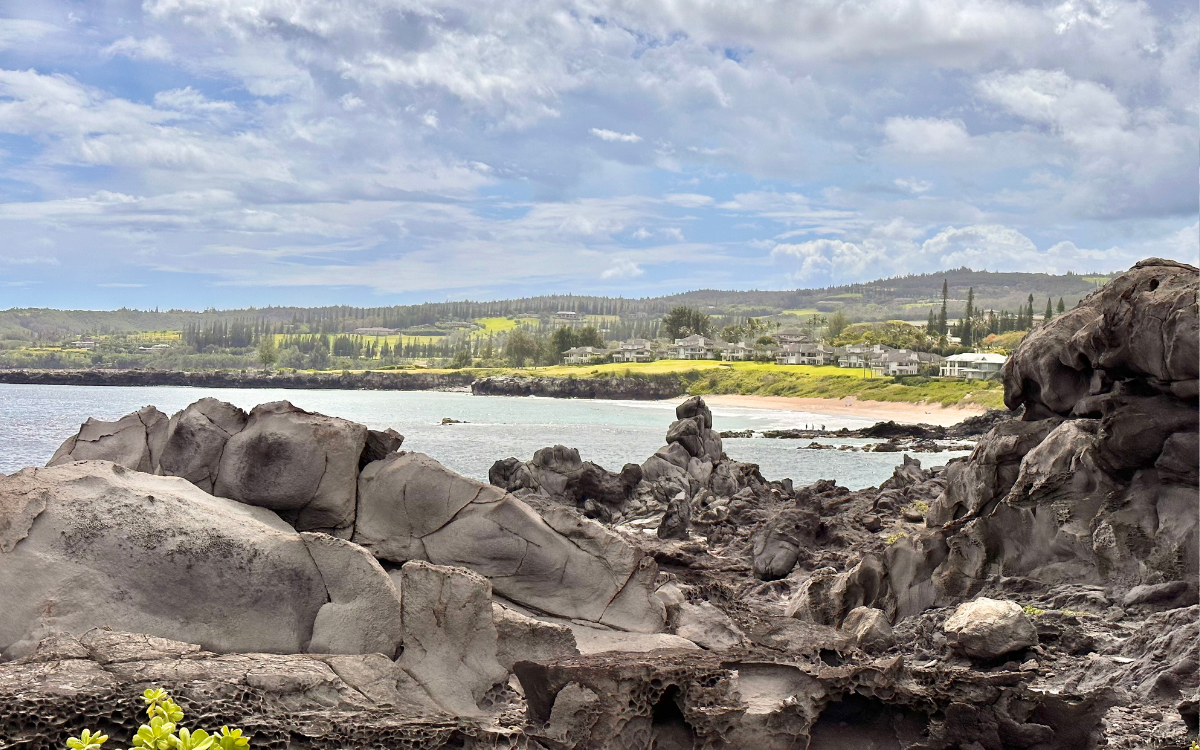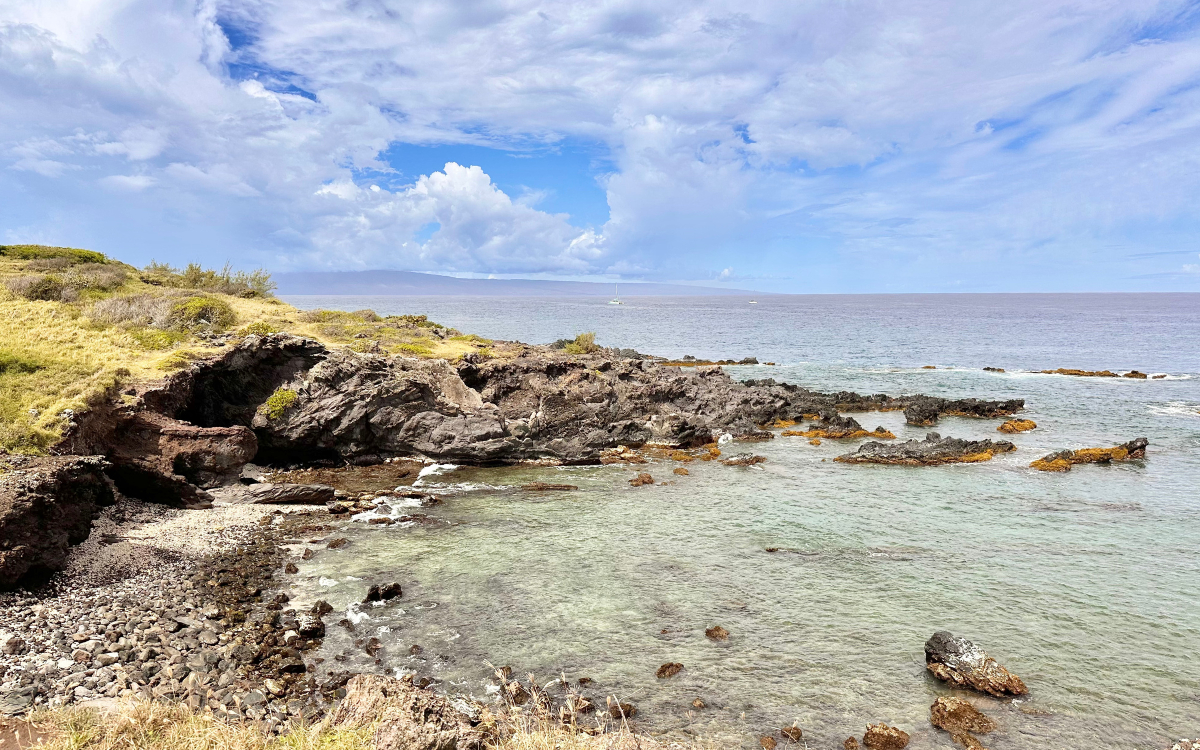#1 Mistake Tourists Make on Maui
If you’re a “go with the flow” traveler, I’ve got bad news…it’s hard to pull off a “perfect” trip to Maui these days without a few reservations.
Ever since Hawaii reopened to a booming number of visitors after the pandemic, a lot of state and national parks have instituted reservation systems at some of the island’s most popular spots to help manage the crowds and make things a little more sustainable.
That means that there are now over half a dozen sites (beaches, trailheads, etc.) throughout the islands that require advance reservations. And some sell out well before you arrive on the island so you really need to have some sort of a plan.
I recently saw somebody in a Hawaii travel group post in a panic that they didn’t know they had to make reservations for things in advance…they thought they could just show up and “go with the flow.” I was tempted to say, well, “as long as the flow doesn’t take you somewhere that requires reservations, you can!” ; )
The #1 Mistake Tourists Make on Maui
But I don’t want YOU to be that person, so here’s the info on THREE popular spots to visit on Maui that now require reservations…
Haleakala National Park
To visit Haleakala National Park for sunrise at the summit, you must make reservations in advance here.
Reservations are required to enter the park gates between 3AM and 7AM (sunrise hours).
Online reservations are $1 per reservation/vehicle PLUS you’ll pay the park entrance fee of $30/vehicle when you arrive (National Park annual passes are also accepted at the gate).
The reservation booking window opens 60 days in advance at 7AM HST. There are also a limited number of tickets released two days before.
You can make one reservation every three days with the same account. So if you want to make reservations for back to back days (in case of weather/conditions), you’ll need to do so with separate accounts (email addresses).
If you can’t get reservations for sunrise, you can enter the park anytime after 7AM without reservations. The summit is spectacular during the day and you don’t need reservations for sunset.
I strongly recommend creating an account before and making sure you’re logged in at 7AM HST because it’s not uncommon for reservations to sell out quickly.
Waianapanapa State Park
To visit Maui’s famous black sand beach at Waianapanapa State Park on the Road to Hana, you must make reservations in advance here.
Reservations are required to visit the beach and are distributed in windows from 7AM-10AM, 10AM-12:30PM, 12:30PM-3PM, and 3PM-6PM. And they are pretty strict about exiting by the end of your window time (you can arrive anytime within your window).
It’s $5/person to enter plus $10/vehicle to park and those fees are paid when you book your time slot.
Reservations open up 30 days in advance.
Iao Valley State Park
To visit the lush, green mountains and hike at Iao Valley State Park, you must make reservations in advance here.
Reservations are offered for 90 minute time slots beginning at 7AM and ending at 6PM. They ask that you arrive within the first 30 minutes of your time slot.
Entry is $5/person plus $10/vehicle to park.
Reservations open up 30 days in advance.
Here’s 17 MORE Things I always tell my friends that are planning trips to Maui…
I’ve written a LOT about Maui on this blog (read through the archives here) and while I usually try to be objective and stick to the facts, the whole point of a blog is to share opinions ; )
While I usually sprinkle them throughout everything I write, I thought it would be fun to gather them ALL together in one place.
So if you want my personal opinions (based on MANY trips to Maui plus my time spent living there) and the travel advice that I give to my friends over coffee, this is it…
1. Stay in South Maui
Maui is a big island, but the two main places visitors stay are the south side (Wailea & Kihei) and the west side (Lahaina, Kaanapali & Kapalua).
People have strong opinions about this one, and I guess I’m no different. I think South Maui is the best place to stay for a long list of reasons.
I’ve hashed it out extensively here >> Wailea vs Kaanapali
But the short list is: 1) Wailea is one of my favorite places to stay in all of Hawaii. Seriously…when I’m planning a “vacation,” this is where I come. 2) If you’re on a budget, Kihei has a condo for you. And great beaches. 3) Geographically speaking, it’s a MUCH more convenient homebase if you’re planning to explore the whole island.
Now don’t get me wrong, I really do like West Maui (you should DEFINITELY plan to explore that side of the island), and every few trips I take I like to stay in Kapalua or Kaanapali for a change of pace, but when I have friends going to Maui for a once in a lifetime trip, I always steer them towards staying in South Maui.
2. Not all luxury resorts are created equally
I’ve practically made a career out of helping people pick the right hotel in Hawaii ; ) So believe me when I say…not all “luxury” resorts are on the same level. And honestly, you really can’t go based on price. EVERYTHING on Maui is expensive these days.
And that’s kind of my point…if you’re going to pay $$$ for a stay at a luxury beach resort, you want to make sure you pick the right one.
Depending on if you’re traveling with kids, it’s an adults only trip, or if you’re trying to cash in hotel reward points, some options are definitely better than others.
I’ve stayed at all the big luxury resorts in Wailea, and ranked them here >> Wailea Resorts Ranked
3. The Grand Wailea is a kids hotel
On that note…the Grand Wailea is widely recommended as one of the best resorts on Maui (it’s the original “flagship” resort in Wailea and guests have STRONG generational loyalty – it’s the kind of hotel a certain demographic of kids have memories of visiting annually growing up), but unlike what the price suggests, it’s far from the most luxurious resort on Maui.
If you have kids (let’s say ages 3-15), it is THE place to be. And if you don’t have kids…it’s the place to avoid ; )
Whenever I see the Grand Wailea recommended as a top honeymoon resort I’m always pretty baffled.
Now don’t get me wrong, it’s very “Grand,” but I think people often confuse the size and scale of the resort for it being nice. Honestly, it’s almost a little too big, and while the waterpark is an undeniable draw for kids, the rest of the resort is subpar compared to what’s in the area.
The property has undergone a major renovation in the last couple of years, but the things they’ve done “right” aren’t things you need to be staying there to enjoy (the spa, restaurants, etc.) and generally I’ve found the rooms, service, and adults only pool to be not so great for the money.
4. You NEED to rent a car
Once you’ve been to Maui, this is pretty well agreed upon, but a lot of people in the planning phase still think maybe they can get by with just using Uber/Lyft.
Well, you can’t. Hawaii is not an all-inclusive destination where you’ll arrive by shuttle and never leave your resort (I mean you could do that…but it’s pretty expensive just to get to Hawaii so most people want to actually see Hawaii. If you want a cheaper resort only vacation, just go to Mexico).
The islands are pretty large so unless you’re just going a few miles, taking Ubers and Lyfts isn’t really feasible (you could be talking $100 one way to go to another part of the island and then not be able to get a ride back).
So even if you’re staying in a “resort bubble,” you’ll most definitely want a rental car for your stay.
I always book through Discount Hawaii Car Rentals. They’re seriously the only company I ever use. They’ll give you the very best prices, you don’t have to reserve with a credit card or pay until you show up, you can cancel and re-book anytime if you find a better rate, and they usually have a special that adds additional drivers for no fee. It’s a no brainer. Click here to check rates for your trip.
5. Support the local business in Lahaina, but don’t snoop around.
I feel like this should go without saying, but the destruction of the Lahaina wildfires is not a place to looky lou. It’s been an absolutely devastating event not just for those who lost their homes and loved ones, but for everyone on the island and it’s super insensitive to try to go “sight see” the damage.
There are more and more businesses that are starting to reopen on the outskirts of Front Street though like the Old Lahaina Luau, Cannery Mall, Aloha Mix Plate, Star Noodle, Honu, Mala Ocean Tavern, etc and they really need your support.
Something that I’ve seen posted about on social media (and on signs in these establishments)…these businesses and workers need and want your support, but don’t initiate conversations asking them about their experiences in the wildfires. It’s painful for many to talk about and while well meaning, I’m sure it gets exhausting being asked about by every person you encounter each day.
6. Don’t book a GUIDED TOUR to Haleakala for sunrise
I’m normally all in favor of a good guided tour, but this is one that I don’t really recommend. When it all works out, I’m sure it is FABULOUS. But here’s something that some people don’t think about…sunrise is a natural phenomenon. Yes, you’re guaranteed that the sun will rise each morning. But you’re not guaranteed to be able to see it from the summit of Haleakala.
I’ve been to the summit for sunrise three times: One time it was incredible. Textbook experience. Everything I hoped for. One time it was COMPLETELY rained/clouded out (we couldn’t see 20 feet in front of us). And one time it was shaping up to be perfect and at the last minute clouds came in and blocked the sunrise completely (although we were able to see colors on the other side of the island).
All three of those times, there were people at the summit on guided tours. Only one of those groups got the experience that they hoped for. All three paid for it.
If companies know in advance that the sunrise will be a total wash, they’ll cancel tours and refund your money. But a lot of the time the weather blows in once you’re already up there. If you’ve been loaded up in a van and driven to the top of Haleakala and gotten the full tour and breakfast snacks, you can’t really expect them to refund you because the weather didn’t cooperate.
All this to say…$150/person is a lot to pay for a chance to see sunrise.
I think it’s very doable to do sunrise (or sunset) at Haleakala on your own (and soooooo much cheaper), but you should definitely read this post first.
7. Maui Ocean Center & Maui Tropical Plantation aren’t necessarily MUST DOs
I don’t have anything against either of these places, but you should do the research to make sure it’s worth the time and money for YOUR group.
I think Maui Ocean Center is a great diversion if you have little kids, but the price is pretty steep ($50/adult and $40/child) for a solid little aquarium (but likely on par with the aquarium you’ll find near where you live).
Wildlife is so plentiful on Maui that if you go out snorkeling you’re likely to see turtles and an abundance of tropical fish. I’d put that money towards a snorkeling excursion or take a trip up to the north shore to see the turtles resting on the beach at Ho’okipa or Kua (Tavares) Bay.
And Maui Tropical Plantation is a nice place for lunch (Cafe O’Lei at the Mill House has a great setting), but I would skip the “plantation tour”, ziplining, etc.
Now here’s what I will say…BOTH of these places have GREAT gift shops that stock a lot of made on Maui products. So if you’re in the area, it could be worth stopping just for a little shopping.
8. Mama’s Fish House really is worth the money
I’m not sure this is really a “hot take” (it’s pretty widely regarded as the most show stopping dining experience on Maui), but there are still people who question the price.
When I go, we usually spend about $120-150/person. (That’s with about one drink per person so your cost could EASILY balloon if you’re hitting it hard). Yes, that’s a lot of money, but it’s actually pretty reasonable when you compare it with a luau or honestly most other “nice-ish” restaurants on Maui.
9. Do your research on restaurants & drink spots
I know, I know, I know…not everyone wants to do “research” for their vacation, but the cost of dining is pretty high in Hawaii so if you just like to walk around and stumble onto a restaurant or lounge, you could end up spending $$$ on a pretty mediocre meal.
I’m always a little flummoxed by people who will say that they can’t possibly afford Mama’s Fish House but will end up at a ho hum restaurant in the tourist sphere where they’ll inadvertently spend 70-80% of the price of a dinner at Mama’s.
If you’re frequenting food trucks, and local plate lunch spots, GREAT. But if you’re in Wailea, Kaanapali, and Lahaina, it’s easy to spend quite a bit of money on a restaurant that’s not necessarily even a special occasion spot.
And the same goes for drinks! On my last trip, I ended up at the hotel/pool bar at sunset and had one of the worst/most expensive mai tais I’ve ever had in Hawaii. Come to find out, there was an INCREDIBLE tiki cocktail bar a five minute walk away with half price drinks ; )
10. If you don’t get upcountry, you haven’t seen the real Maui
I feel really passionately about this one ; ) When I lived on Maui, I lived upcountry in Kula and it forever has my heart.
Most visitors see a brief glimpse of Maui’s upcountry as they’re racing down the mountain after sunrise at Haleakala to get back to the beach but I think it deserves a bit more of your vacation time ; )
Stretching to include the cowboy country of Makawao, the farmland of Kula, the eucalyptus forests of Ulupalakua, and the slopes of Haleakala, in a lot of places, if you couldn’t look out and see the ocean, you’d swear you were in the high meadows of Colorado or the Texas hill country.
With its sweeping ocean vistas, rugged green hills, purple jacaranda trees, mom and pop shops and restaurants, and many farm tours, it’s definitely a place that you’re going to want to spend some time visiting.
I’ve written a full post about the upcountry here >> Things to Do Upcountry Maui
But my short list is:
Maui Wine
Breakfast at Grandma’s in Keokea
Ali’i Lavender Farm
Maui Pineapple Tour
Shopping in Makawao
11. Most resort luaus are skippable
Luaus are big $$$ these days and with a mediocre (at best) meal, it’s hard to justify the price tag let alone feel like they’re “worth it.”
I have two exceptions:
First, the Old Lahaina Luau. I think this is hands down the best luau in Hawaii and if you’re in any way contemplating a luau, this is the one it needs to be. I’ve got a full write up here >> Old Lahaina Luau
Second, if you want to see the show and cut out all the other “fluff”, then I LOVE the Wednesday night Hula Show at South Maui Gardens. For about $100/person (sometimes they have discounts online), bring your own chairs or blankets to set up on the lawn and enjoy a solid hula show.
They have dozens of food trucks on property, but my favorite is Kitoko. They have a special menu for the hula show nights and it’s AMAZING. The crispy pork belly with sweet potato gnocchi is a don’t miss.
You’ll get the show, a nice atmosphere, and waaaaaaay better food at a fraction of the price of a resort luau.
Find more details here.
12. The Road to Hana is incredible, but exhausting
Maybe this is my most controversial take??
Here’s my honest truth…the sites you’ll see along the Road to Hana are top tier (black sand beaches, a red sand beach, rainbow eucalyptus trees, endless waterfalls, gorges, and the most incredible views of the jungle along the coast).
Seriously, it’s hard to describe how magnificent this drive is. AND I won’t lie…I’m always exhausted after. Like miserably so.
The Road to Hana has some of the most special and magnificent places that exist in Hawaii (in the world!), but it is NOT something that I do on every trip. Honestly, it’s something I usually only do when I’m taking somebody that’s never been before.
I can’t tell you to skip it (that would be a SHAME!), but I think it’s good to go into the day with the right expectations. It is a mega ADVENTURE day not a pleasant little drive down the coast in between coffee on the beach and a romantic sunset dinner.
I recommend doing it early on in your trip, and making the day after a low key beach/resort day with no plans to recover.
That being said…if you don’t like being in the car, if you get at all carsick, if winding roads with little to no shoulder make you nervous, if you have small kids, and if your trip is focused on being a relaxing getaway, then doing the big Road to Hana day trip MAY not be for you. And that’s ok!
13. Listen to locals about “sensitive spots” on the Road to Hana
In recent years, a surge in the numbers of visitors mixed with infrastructure that’s not equipped to handle it has made driving the Road to Hana a sensitive situation with locals.
Basically, there’s one road from the remote town of Hana that connects to the main part of Maui and while it’s a spectacular drive that’s become a pilgrimage of sorts for visitors, it’s also the road that locals use for going to work, school, running errands, etc.
So a steady stream of vehicles driving too slow, stopping in the middle of the road to take pictures, parking illegally, etc is a growing nuisance to locals. While they’ve already started to crack down on illegal parking, other interesting developments to help manage tourism in this area are starting to take shape.
In March 2024, the Hawaii Tourism Authority and Maui Visitors and Convention Bureau announced a partnership with three community based programs to help manage tourism in Hana as part of the East Maui Tourism Management Pilot Program.
Exactly what this will entail in the future remains to be seen (it seems like they’re still largely in the data collection phase right now), but for now, the East Maui Ready (EMR) group has issued an advisory that visitors avoid Waiʻoka (Venus Pools) and Kaihalulu (Red Sand Beach) near Hana.
These are two popular stops on the Road to Hana that have been controversial among locals for a while now. Partially because they’re beloved local spots (with almost no parking and no maintained access) that have become overrun with tourists and partially because they both see high emergency response rates (dangers from flash flooding and steep and crumbling trail conditions).
I’ll admit that in the past, hiking to the Red Sand Beach has been one of my favorite things to do along the Road to Hana. It’s spectacular. Here’s the deal…I’m a pretty average hiker. I don’t do extreme hikes, but I’m also not a baby. Every time I’ve hiked this, it’s turned out okay. But I’ve also always spent most of the time thinking about how it could easily go wrong.
The trail is high off the ground (with plenty of sharp rocks at the bottom), covered in slippery pine needles, and a large part of it along a narrow rocky ledge that’s prone to rock slides when it rains. The ocean is also particularly rough once you get to the beach so needless to say it’s a spot where emergency responders are often called.
In the past, I’ve taken the approach of “I’m going to tell you exactly what this is like so you’re prepared” and you can decide for yourself if you want to do it or not, but I think it’s time to move on.
Besides it being fairly dangerous (the trail isn’t remotely “maintained” and the owners of the land don’t try to block people from accessing it but deny all accountability if you do trespass), for ME the deciding factor is that the people who live here are asking you not to.
And it’s not because they’re trying to hide something from you that they want for themselves. There are serious dangers associated with these places (especially because they’re not maintained or monitored in any way) and when visitors need to be rescued, it diverts resources away from the small, isolated community.
14. Snorkeling boat tours don’t take you places that are WILDLY better than the off the beach spots
My favorite Maui snorkel tour is pretty $$$ (worth it, but $$$) but the good news is you do NOT have to go out on an organized tour to do some great snorkeling.
While Molokini is really something to see, I’ve snorkeled all around Maui (on tours off a boat and from the beach), and honestly…popular spots around the island like Black Rock at Ka’anapali, Napali, Kapalua, Olowalu, Honolua Bay, and Ulua Beach are as good or better as places you can only get to via boat in terms off the reef and the fish you’ll see.
That said, if you have the money, going out on a snorkeling trip is always a fun way to spend the day and there’s a lot to be said for having a crew of people handling everything (from food to safety).
If you’re staying at a resort, most of them include complimentary snorkeling equipment to snorkel at the beach in front of the hotel (most hotels in Wailea and Kaanapali have decent snorkeling off the beach).
If you’re really into snorkeling, do a weekly rental from a place like Boss Frog and you can snorkel to your heart’s content.
And just a bit of personal advice…I’m an excellent swimmer but in recent years I’ve started always wearing a flotation belt when I’m out in water over my head. It’s something to think about.
15. “Resort life” is something to be experienced
Yes, yes, yes everybody wants an “authentic” experience nowadays and to “live like a local” and you 100% need to get out and explore the island and see what makes Hawaii so great, BUT resort life is pretty great.
Maui has some of the best beach resorts in the WORLD.
If you’ve got the cash to splash out on a luxury resort for your whole trip, great! But even if you don’t, here are two ways to get a taste of “resort life” for less:
1- Split your stay and stay at an affordable condo for the first part of your trip (while you’re out doing all of your exploring and adventuring) and then splurge on a fancy beach resort for the last couple of nights and just vacation.
2- Have you heard of Resortpass? Some hotels and resorts that aren’t at capacity sell daypasses to their pools and amenities for a fee that is WAY less than the price of a room.
One time when I was staying at a budget hotel, I ended up with a free unplanned day so we booked a cabana at the Fairmont Kea Lani through Resortpass and it was SUCH a great way to spend the day.
Availability changes seasonally and different resorts have different prices and offerings, but you can check out Maui resorts here.
It’s a great way to spend a full day living “resort life” on Maui without paying “resort prices.”
16. I’d rather do a nice dinner on land than a sunset dinner cruise
I’ve never gotten the allure of a sunset dinner cruise. You can have a MUCH better meal at a restaurant on land (with sunset views!) for less money usually!
And while I LOVE a day out on a catamaran, I’d much rather go during the day and squeeze in a little snorkeling or trip to Lanai.
So that’s my advice, if you’ve got the money to spend on a boat excursion, go during the day for snorkeling and have dinner somewhere nice…on land.
17. During whale season, do a snorkeling trip instead of a whale watching trip
Same principal. If you want to see whales, I would book a snorkeling trip instead of a whale watching trip. You’ll get to snorkel AND see whales.
Here are 15 rules not to break on Maui if you don’t want to make the locals mad (some of these are laws, some are common sense, and some are just a courtesy)…
1. Don’t act like an entitled tourist.
It’s the worst. Just because you’re spending a lot of money to be there doesn’t mean you can 1) act like a jerk, 2) be demanding, 3) do whatever you want.
Hopefully this sounds super dramatic to you and something that should go without saying WHEREVER YOU ARE IN THE WORLD, but hey, some people are crazy and it has to be said.
2. Don’t touch the sea turtles or the monk seals
Both Hawaiian Green Sea Turtles and Hawaiian Monk Seals are protected species meaning IT’S A FEDERAL OFFENSE TO TOUCH THEM. You’re required to keep a MINIMUM 10 foot perimeter from these creatures whether they’re in the water or on the land (it’s not uncommon to see them sunning themselves on beaches).
And if you’re in the water you should stay even further away because you have less control.
Some beaches (especially Ho’okipa on Maui) set up fairly large perimeters around turtles and monk seals (more common for the monk seals because they’re more rare) so be sure to respect the perimeter and don’t be one of those people that ducks under a rope because you’re “technically allowed to be 10 feet away.”
The good news is that the numbers for these species (especially the Hawaiian Green Sea Turtles) is GROWING because of their protected status.
Read More: Where to Find Turtles on Maui
3. Don’t step on the coral
Those aren’t rocks under the water, that’s coral! It’s actually a living animal, and if you stand on it when you’re out snorkeling, it can do a lot of damage. At some popular snorkeling sites, you may need reef shoes to enter and exit the water (along a rocky shoreline), but once you’re in the water, stay horizontal.
Read More: Snorkeling Spots on Maui
4. Don’t use toxic sunscreen
Tons (literal TONS) of sunscreen ends up washed around Hawaii’s beautiful coral reefs each year and it’s increasingly being understood how harmful it is (how much conditions improved during the COVID shutdowns was pretty astounding).
Hawaii recently passed a bill making it illegal to sell sunscreen with two ingredients found to be most harmful to reefs and it makes a HUGE difference when people wear reef safe (or at least reef friendly) sunscreen when in the ocean.
Read More: My Favorite Reef Safe Sunscreen
5. Don’t be a strain on the environment
The staggering number of visitors that Hawaii receives annually means it can be a real strain on the islands. But there’s a lot you can do to make a difference. Pick up your trash. Heck, pick up other people’s trash.
Try and use refillable water bottles if you can. And they don’t use plastic bags in Hawaii so either bring some from home to use for things like wet swimsuits, picking up trash at the beach, etc. Or pack some reusable tote bags for grocery shopping.
6. Don’t leave valuables in your car
Yes, Hawaii feels pretty safe but don’t get lulled into a false sense of security just because you’re in paradise. Don’t ever leave anything of value in your car, and honestly my rule is to never leave anything in sight at all in the car. A thief doesn’t know your beach bag only has towels and a book in it. But the cost to replace the window is the same.
7. Don’t get in the way, but don’t drive like a jerk
Remember, while you’re on vacation, the locals are not. Be aware of your surroundings and try not to hold anybody up. When in doubt, just pull over and let them go around.
Don’t stop your car in the middle of traffic because you want to take a picture of a rainbow or a mongoose or a chicken or a waterfall (every other visitor there also wants to do the same and it can create a real traffic jam which isn’t something you want to deal with every day when you’re trying to get to work).
Don’t park illegally by the side of the road (super important along the road to Hana on Maui). Don’t park in front of business and then leave your car there while you’re at the beach.
Know the one lane bridge rule: there are places (mostly along the road to Hana on Maui or the north shore of Kauai) where there are one-lane bridges. The local custom is to let 5-7 cars go at a time. If your side is going, count how many cars go ahead of you to determine whether you should go with this batch or stop and let the other side go first.
And on the other end of the spectrum…avoid tailgating, using your horn, driving aggressively, etc.
8. Don’t trespass on private property. Respect “Kapu” signs.
Again, seems like a no brainer right? You’d be surprised. Just because you read about a hike to a waterfall in a guidebook doesn’t mean you can go there if it’s on private property. This is particularly a big problem along the Road to Hana on Maui.
If you have to climb around a gate or ignore posted signs, don’t do it. Also, it’s generally appreciated if you don’t geotag locations on social media of sites that are considered secluded or special to locals (even if it’s legal to access).
9. Don’t ignore the power of the ocean
The ocean is no joke. Quite a few people drown every year and a lot of it is avoidable. Never get in the water without watching it for a while. Never turn your back to the ocean. Do you really need to be snorkeling on your own 100 yards from shore? Just because there’s a ledge, do you need to jump off of it? My rule of thumb…watch the locals and NEVER do anything they’re not doing. And even then, it still may not be the best idea for you.
10. Don’t get too close to blowholes and rocky areas at high surf
Stay away from blowholes. Stay away from rocky areas when there’s high surf (there’s always tempting natural pools to swim in but it’s so risky). Don’t swim at beaches where there are warnings posted. Stay on trails.
It’s not like locals don’t want you to have any fun. But besides these things being in the best interest of YOU, here’s something to think about: for every first responder/coast guard/helicopter that’s dispatched to help someone who got themselves into a not so smart situation, those are resources that aren’t available to local families when they need help. And on an island with finite resources, that can be a big deal.
And this isn’t dramatic…many people die in Hawaii each year because they ignore safety warnings.
11. Don’t take lava rocks home with you
Besides the fact that it’s illegal to take lava rocks back home with you, Hawaiian legend has it that it will bring bad luck. We’ve all seen that episode of the Brady Bunch, right? ; )
12. Don’t hike during or after heavy rain
Flash flooding is no joke in Hawaii and even relatively tame trails can become very dangerous while it’s raining or after a heavy rain.
Always keep an eye on weather forecasts and be ready to head back in a hurry if things change. Also, chat with park rangers or even locals or other hikers when you get to a trail head if you’re uncertain.
13. Don’t hike a trail you haven’t researched before
If you’re an inexperienced hiker, stick to the most popular (and well maintained spots). If you’re trying some of the “Insta-famous” hikes (especially on Oahu) just know that a lot of them are either illegal or highly dangerous.
That’s a no go for me, but if you’re hell bent on getting the shot for the ‘gram, you better be well prepared and know exactly what you’re getting yourself into.
14. Don’t be completely oblivious to the Hawaiian language
Nobody is going to be mad at you for not speaking Hawaiian (not many people do anymore), but it goes a long way to make an effort. “Aloha” is used for greetings (hello and goodbye) and mostly loosely also means “love”. “Mahalo” means thank you. “Keiki” means kid (you’ll see this a lot…kids menus, etc.). Pronouncing Hawaiian words can be TRICKY. Here are a couple of tips:
The vowels are pronounced like Spanish:
“A” = ah
“E” = eh
“I” = ee
“O” = oh
“U” = oo
99% of the time you pronounce every letter distinctly.
The exceptions are: “ao” is pronounced “ow”, “ai” is pronounced “eye”, “au” is pronounced “ow”
Something else useful to know: “Hawaiian” refers to anyone born with Hawaiian blood. Like, ancient Hawaiian blood, not just born in the state. “Local” refers to anyone born in Hawaii (except usually white people but sooooometimes them too). “Haole” refers to white people and tourists in general. It can be derogatory, but not necessarily. The term “kama’aina” is also thrown around which refers to anyone from or living in Hawaii regardless of their ethnicity.
15. Have a basic understanding of Hawaiian history & culture
I think it’s important for every visitor to Hawaii to have a little history lesson for some social context. Here’s Hawaiian history in a nutshell – summed up in less than 500 words ; )
Yes, Hawaii is the 50th state in the Union, but there are many people who consider it an illegally occupied sovereign nation. Whether or not you agree with that is beside the point, but understanding the perspective and respecting the people of Hawaii will go a long way towards enriching your travel experience.
Here’s a quick rundown: The Kingdom of Hawaii was a thriving monarchy under the rule of King Kamehameha I (who united the islands in 1810). The first missionaries showed up in 1820. The first sugar cane plantation was started in 1835, and the Hawaiian Islands developed a reputation as prime agricultural land (this is when American influence in Hawaiian government begins–the major business owners in Hawaii were American). By the 1850s, the plantations were booming and they needed more labor. Immigrants were recruited from China, Japan, Korea, the Philippines, and Portugal.
In 1882, the Iolani Palace was completed and it had electricity before the White House and Buckingham Palace. In 1887, the US began leasing Pearl Harbor.
Later in 1887, a group of largely non-Hawaiians drafted a new constitution (signed under threat of force) that stripped the King of power (later called the Bayonet Constitution). In 1891, Lili’uokalani (the last Queen of Hawaii) ascended to the throne and in 1893 she attempted to pass a new constitution that would give power back to the people of Hawaii.
It gets really complicated from here, but basically a coup to overthrow the Kingdom of Hawaii followed immediately, designed largely by American businessmen and backed by the US military (a show of force mostly). To protect American property and interests in the Kingdom of Hawaii, the Republic of Hawaii was formed as the US tried to move towards annexation (the American businessmen forming the Republic of Hawaii kept the US from being technically directly involved).
Interestingly, the treaty to annex Hawaii never passed the Senate and it gets a little murky as to how President McKinley eventually signed the Newlands Resolution in 1898 which created the Territory of Hawaii. Sanford B. Dole (yep, the pineapple guy : ) was appointed as the first Territorial Governor which tells a lot of the story, and Queen Lili’uokalani eventually died under house arrest.
The sugarcane plantations kept booming. Business was good. Pearl Harbor was attacked in 1941. Hawaii was admitted as the 50th state in 1959. And now tourism is the most dominant economic driver in the islands.
While many native Hawaiians feel that their land (and to some extent their culture) has been stolen from them, they’re largely VERY welcoming to visitors. But that’s what you are…a visitor in someone’s home. If you get that and behave accordingly, Hawaii is the greatest place on earth you’ll ever visit. Yes, it’s very beautiful, but there are a lot of beautiful places. The people and the way that they share their culture is what makes it special.
My 10 DO NOT MISS Things to Do on Maui
1. Old Lahaina Luau
I strongly believe that the Old Lahaina Luau is the best luau in all of Hawaii. Maybe a bold statement, but I’ve been to a lot of luaus in Hawaii and I know when I’m impressed. And I’m impressed. So if you’re doing a multi island trip and you’re trying to decide where to do your luau, pick this one.
The Old Lahaina Luau does absolutely everything right. I’ve got a full post about the Old Lahaina Luau with all of the details here, but in a nutshell…
- The setting is oceanfront and so dreamy
- The venue is custom built (no folding tables on a lawn) and designed so well
- There’s traditional seating (on cushions at low tables) which is so fun but also table and chair options
- As the sun sets, the dancers are framed by palm tree silhouettes
- Arrival experience is top notch (fresh flower leis and proper mai tais in actual glasses)
- The open bar has amazing restaurant/bar quality drinks
- The food is traditional Hawaiian luau food
- The dancing is phenomenal and the show tells a story that’s paced just right (but there is NO Samoan fire knife dancer)
Well I’m not sure what else I can say. I’ve been to a LOT of luaus and honestly most of them kind of run together, but this one is special. Besides everything I’ve already told you, I guess the best way to sum it up is…while a lot of luaus feel like a production or a list of experiences to check off (Imu ceremony, check…hula lesson, check…taste poi, check) the Old Lahaina Luau feels more like a pleasant evening spent with friends enjoying good food and entertainment. Which at the end of the day, is what makes it feel so authentic.
Since this luau is the most popular one on Maui (in all of Hawaii really), it often books up months in advance, so I recommend making reservations as soon as you know your travel dates. Last time I visited, I booked our tickets about 3 months in advance and we had great seats (your seating assignments are made in the order that tickets are reserved).
2. Snorkel Molokini & Turtle Town
Located three miles off Maui’s southern shore, Molokini Crater has long been Maui’s (and possibly Hawaii’s) most popular snorkeling and diving destination and it’s easy to see why.
The partially submerged volcanic crater with its famous crescent shape is not only home to an extensive coral reef with 250+ species of tropical fish, but it also has an incredible quality of water that boasts up to 150 feet of visibility.
There are some amazing snorkeling spots on Maui that can be accessed by beach or even by boat, but Molokini is completely unique. Because the crater is volcanic rock and it’s miles off shore, there’s not a trace of sand or soil in the water. This is what gives the incredible clarity that’s unprecedented in Hawaii.
Sounds pretty great, right? So what’s the downside? The downside is the number of boats that take snorkelers out to the crater that can make it CROWDED, and many tour providers operate under conditions that can make the experience less than ideal. Not that it’s ever bad, but when you’re paying a premium, you want the best experience possible.
Showing up to Molokini mid morning with a dozen other boats (some with as many as 150 people!) after an hour boat ride just isn’t magical. But don’t worry-I’ve got the scoop on how to see Molokini the best way. Uncrowded.
My favorite way to snorkel Molokini is with Kai Kanani on their Sunrise Deluxe Snorkel.
3. Black Sand Beach & Pipiwai Trail on the Road to Hana
Maui’s most epic adventure is driving the famed “Road to Hana.” Hana is a tiny town in the Eastern jungles of Maui, but it’s not about Hana itself, it’s about the journey to get there and the stops you make along the way. And there are two stops on the Road to Hana that are on my must see list:
Maui’s dramatic black sand beach is STUNNING and it’s easily the #1 don’t miss stop along the Road to Hana. But it’s more than just a beach, this state park has hiking trails, a blowhole, a sea cave, and plenty of dreamy coastal views.
But you HAVE to make reservations or you WILL be turned away at the gate. You can make reservations 30 in advance (and no later than the day before) here. Parking is $10/vehicle and there’s a $5/person entry fee that all has to be registered and paid for when you make your reservation.
The Pipiwai Trail in the Kipahulu District of Haleakala National Park is one of my favorite hikes in Hawaii.
Dramatic bamboo forest + 400-ft tall waterfall = must do.
The four mile round trip hike takes about 2 hours, and even if you’re not an avid hiker, it’s 100% worth the effort. It’s not a particularly difficult trail (it’s super well maintained), but it’s usually pretty humid so it can feel challenging.
This is a separate entrance from the summit of Haleakala National Park (where people go for sunrise and sunset), but if you pay the entrance fee ($30/vehicle), your receipt is good at BOTH locations for three days.
4. Haleakala National Park
There aren’t many places in the world where you can stand on top of a 10,000 ft tall volcano in the middle of the ocean and watch the sun begin to awaken.
It’s become a pilgrimage of sorts, with bleary eyed tourists waking up in the middle of the night and donning coats and hats to make the long and windy drive up the mountain to Haleakala’s summit where they stake out spots and wait for a glimpse of those first sights of peachy orange hues peaking through the cloud canopy.
It’s been called magical and that’s all you can really say about it. You’re unlikely to experience this kind of phenomenon anywhere else in the world.
If you’re making the trek up to Haleakala for sunrise (entering the park between 3AM and 7AM), you’ll need a reservation through the National Park service. You can make reservations 60 days in advance and they cost $1 (plus the $30 park admission/vehicle upon arrival).
5. Wailea Beach Walk
This is one of my favorite parts about staying in Wailea, but even if you’re not this is a great way to see vacationland.
This beachfront walkway between Polo beach (Fairmont Kea Lani) and Mokapu beach (Andaz) is 1.5 miles of beachfront and cliffside beauty. Whether you’re a jogger or just a stroller (or using the path to hop from happy hour to happy hour), you’ll definitely want to explore the trail.
There’s plenty of public parking at Polo Beach, Wailea Beach, and Mokapu Beach and from there you’ll be able to access the trail.
As far as things to check out in Wailea…I think having a drink at the Lobby Bar at the Four Seasons is a must do Wailea experience. It’s just so…civilized.
Don’t miss the giant “aloha” sign in the outdoor lobby of the Wailea Beach Resort.
And once you hit Mokapu Beach in front of the Andaz (where the paved walkway ends), you can actually walk on the beach for a long way as it connects to Keawakapu Beach. There’s also pretty good snorkeling right off the beach at Mokapu.
6. Monkeypod Mai Tais
If there’s one drink that’s synonymous with Hawaii, it’s the mai tai. I like to try them wherever I go because you never know where you’re going to find the BEST one, but after a LOT of research, I have two stand out favorites:
Monkeypod. This isn’t really an under the radar place. They’re famous for their mai tais topped with lilikoi foam and their happy hour always draws a crowd. Besides pretty good deals on drinks, most of their appetizers and pizzas are half off.
When I lived on Maui, we would stop at the Monkeypod in Wailea for happy hour all the time after a beach day so it feels a bit like tradition. I never feel like I’m actually in Hawaii until I’ve had a Monkeypod (or Merriman’s) mai tai. If you’re staying on the west side (or heading that way for the day), the Monkeypod in Whalers Village has amazing ocean views.
My other favorite (new) spot is Tikehau Lounge in Wailea. It has more a tiki bar/craft cocktail lounge vibe and their drinks are all a home run. You’ll find better (and cheaper) drinks here than in all the nearby resort lounges).
And the food is good too!
7. Dinner at Mama’s Fish House
Tell 100 people who’ve been to Maui before that you’re going to Maui and 95 of them will ask “are you going to Mama’s?”
It’s not a “hidden gem” or an out of the way place that nobody knows about. But it’s the best.
I like to think of this places as “Gilligan’s Island meets fine dining.” The inside of the restaurant is layered and welcoming while still being impressive. Like maybe you’re eating in someone’s home or family restaurant.
One of my favorite parts is that the menu is printed fresh everyday so they can list not only which fish they’re using in each dish, but where on the island it was caught and the name of the fisherman. I’ve never seen anything like that anywhere else.
My Usual Order: I must confess, I get the exact same thing EVERY time I’m at Mama’s. I mean, when I’m paying this much for a meal and I find something outstanding, I just don’t like to mix it up.
Drink: Guava Fizz
Appetizer: Crispy shrimp wontons.
Entree: Mac nut crusted mahi mahi (stuffed with lobster and crab)
Dessert: The Pearl (Honestly, I’m usually too stuffed for dessert but this is their signature)
It’s not cheap, but it never disappoints. And it really is an EXPERIENCE.
Since it’s such a hot spot, you NEED a reservation. They take reservations about 18 months in advance, and honestly they’re usually pretty booked up for dinner at the six month mark. So reserve early! But it’s a lot easier to get a lunch reservation closer to your travel dates.
8. Maui Wine
I have a long list of places that I love to visit in Maui’s upcountry, but I think Maui Wine in Ulupalakua is my #1.
- The drive out to the winery is one of the best on Maui
- The property is incredibly beautiful and historic
- The aloha hospitality is alive and well
- There are snacks. And drinks.
The drive out to the winery is INCREDIBLY SCENIC. From Keokeo onwards, plan to slow down and spend a little extra time at some of the pullouts to take in the views down below.
You can show up, poke around the property, and check out the gift shop anytime you want, but if you want to do a tasting, you should definitely make a reservation in advance. They try to accommodate walk-ins, but there’s pretty limited seating so if this is something you’re serious about experiencing (it should be!), plan ahead.
Reservations (make them here) get you a table for 90 minutes (this isn’t the kind of place where they’re standing over you with a stopwatch) and you can order anything you want from the menu including flights, wine by the glass, cocktails, and small bites.
I can’t really comment on the quality of the actual wine here (it’s not something I’m really into or knowledgeable about), but the experience is great.
My favorite is always the Lokelani, but this time we did the pineapple tasting and rose ranch tasting, plus a brie tray and had an overall fantastic time sitting out on the lanai sampling and taking in the views.
And the views are GREAT. Besides looking out and being able to see the ocean, the winery is located on a beautiful tree filled estate with historic buildings and beautifully landscaped grounds.
The tasting room is open Tuesday through Sunday from 11AM to 5 PM.
9. Kapalua Coastal Trail
The Kapalua Coast Trail stretches for about 1.75 miles along West Maui’s coastline and offers beautiful beaches, sweeping ocean views, and dramatic lava landscapes all from a fairly easy walking trail.
If you’re looking for a fairly easy and accessible hike, with INCREDIBLE views without having to go to the Hana side of the island, this is my number 1 recommendation.
If you do this as an out and back hike…depending on your pace and how often you stop to take in the sights, the hike can take anywhere from 1.5 to 2.5 hours. For casual hikers who like to take photos and enjoy the scenery, setting aside 2 hours is a pretty good estimate.
The trail is easy to follow and part of it feels more like a rugged hiking trail, but some of it feels more like a pleasant stroll through a resort area.
The Kapalua Bay Beach Parking Lot has the most parking spaces available, but you have to pay now. This is the south end of the trail. There’s limited parking on the street. And there’s cheaper parking in the Kapalua Tennis Garden lot.
There’s also a small paid parking lot (less than 15 spaces) on Lower Honoapiilani Road and Kapalua Pl which has the best access for Oneloa Beach (this lot puts you more towards the north end of the trail). DT Fleming Beach has more parking (free) and that would put you at the far north end of the trail.
If you’re not staying in Kapalua and you’re looking to make a day of this, I would plan to arrive at the Kapalua Beach parking lot early enough to get a spot. Take all of your beach gear with you (chairs, umbrella, towels, snorkeling gear, cooler, etc.) but leave it in the car (don’t leave valuables in the car!).
Start your hike at Kapalua Beach and hike the Kapalua Coastal Trail all the way north to the Ritz Carlton at DT Fleming Beach. It’s about 1.75 miles there. You could stop in at Cafe Kai in the resort for coffee and breakfast. It’s a cute little shop and there’s plenty of seating around the cafe and lobby with great views out over the resort and ocean.
When you’re done, reverse your route and end with some beach time at Kapalua or Napili Beach.
10. Shopping in Paia & Makawao
I love shopping local in Hawaii and my two favorite small towns to spend an afternoon browsing through stores are Paia and Makawao. Both are filled with small shops and great restaurants and have a more “local” feel than you’ll find in Wailea, Kihei, Lahaina, and Kaanapali.

